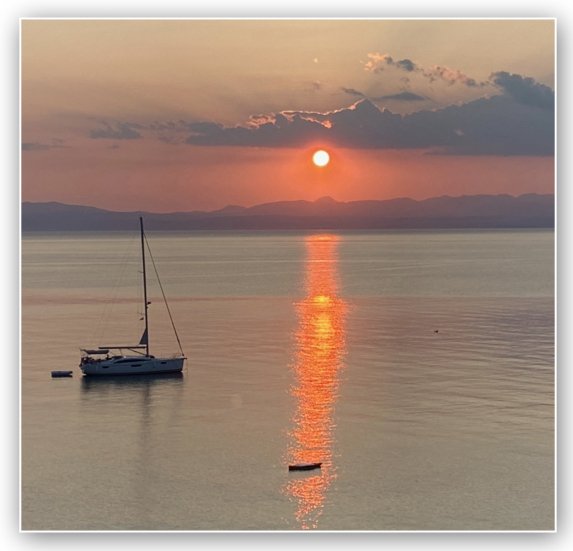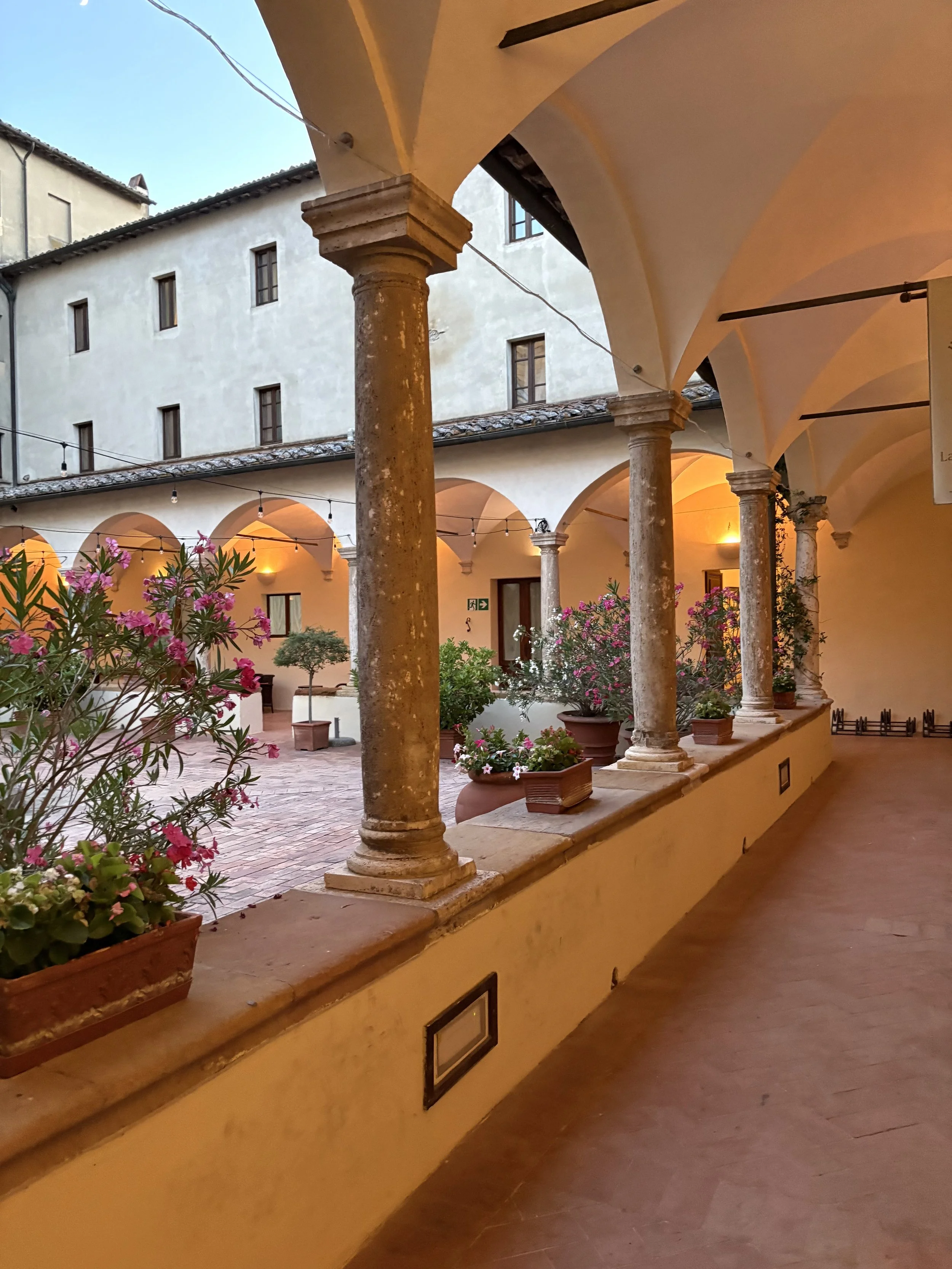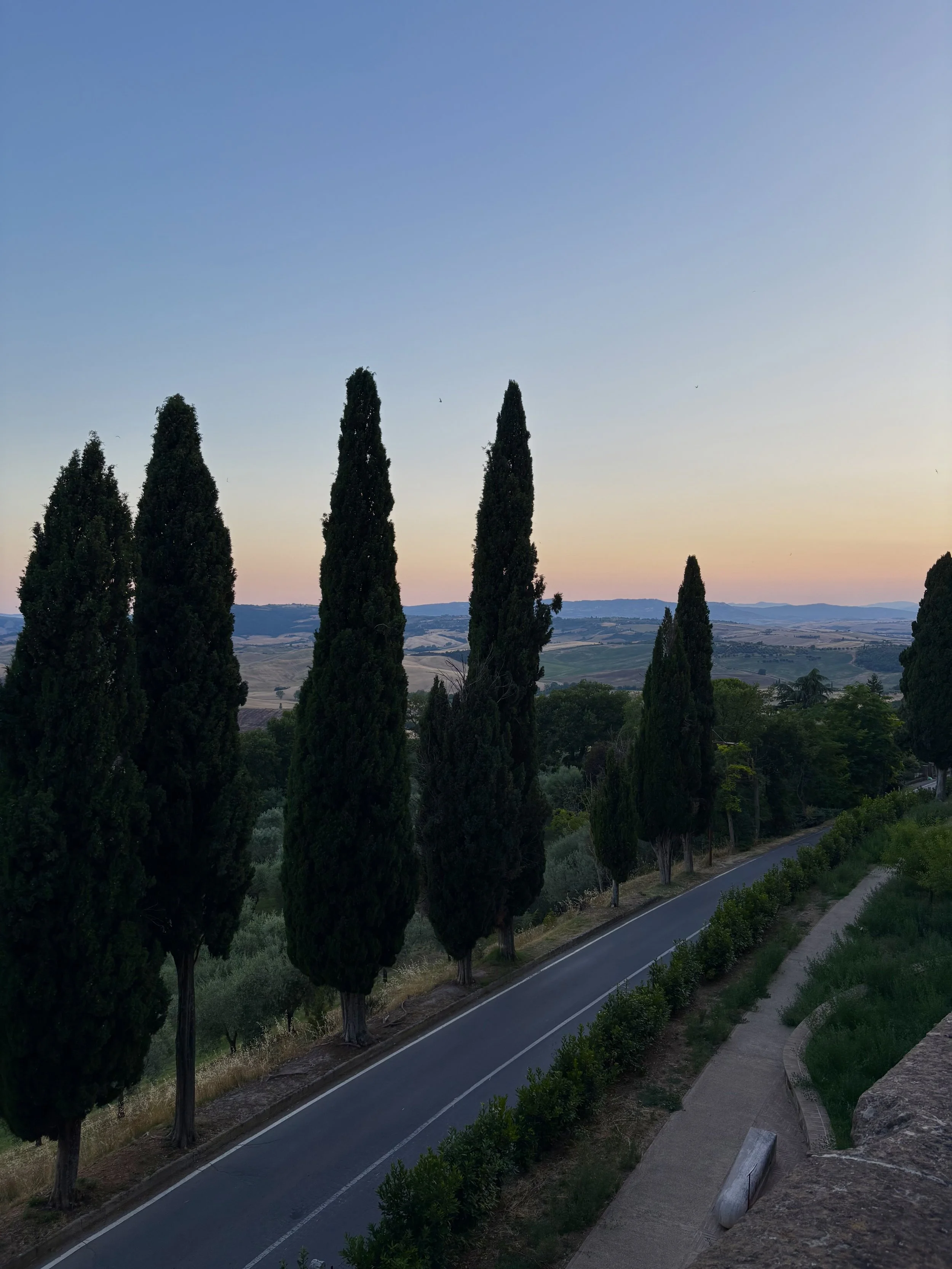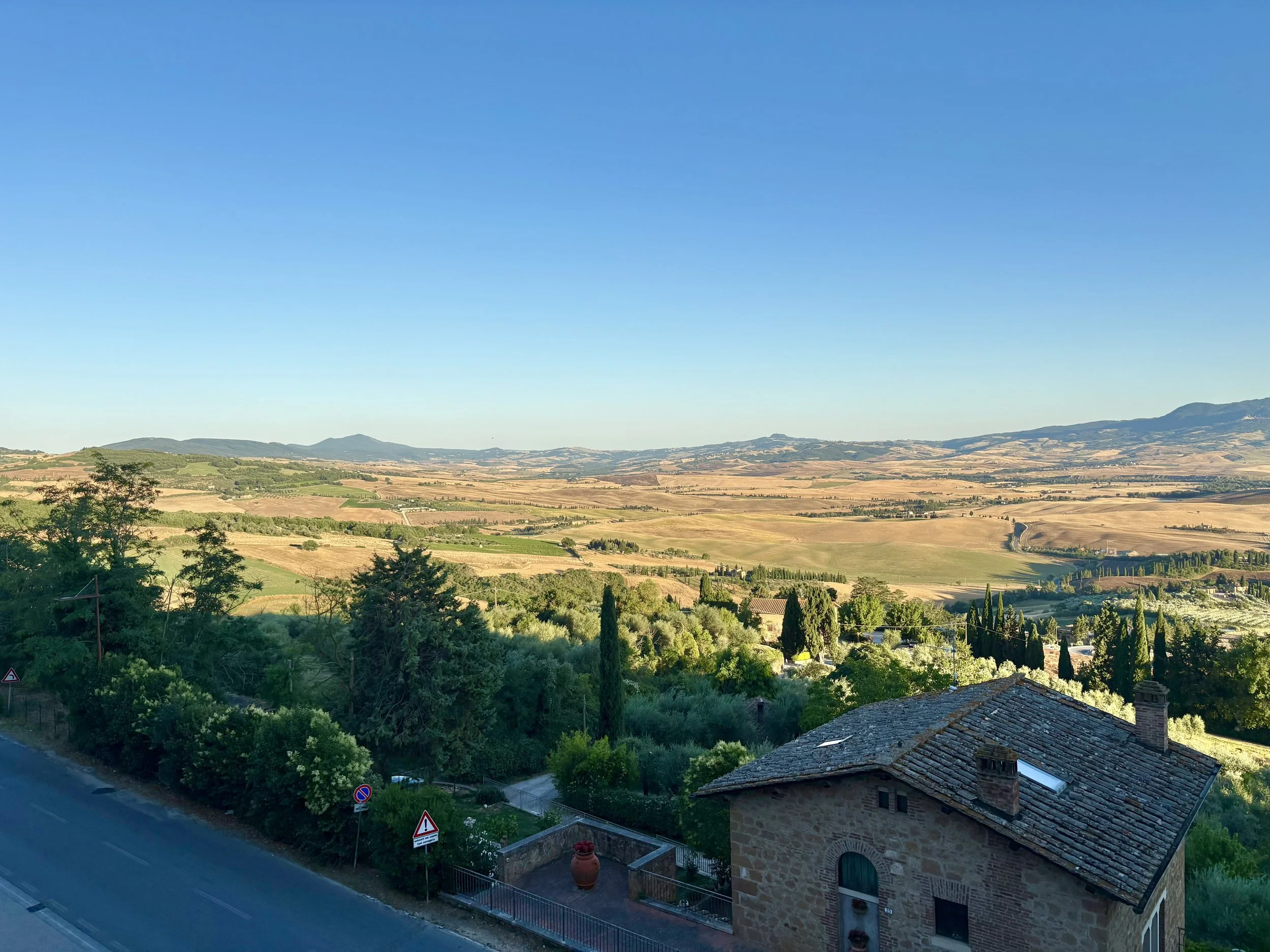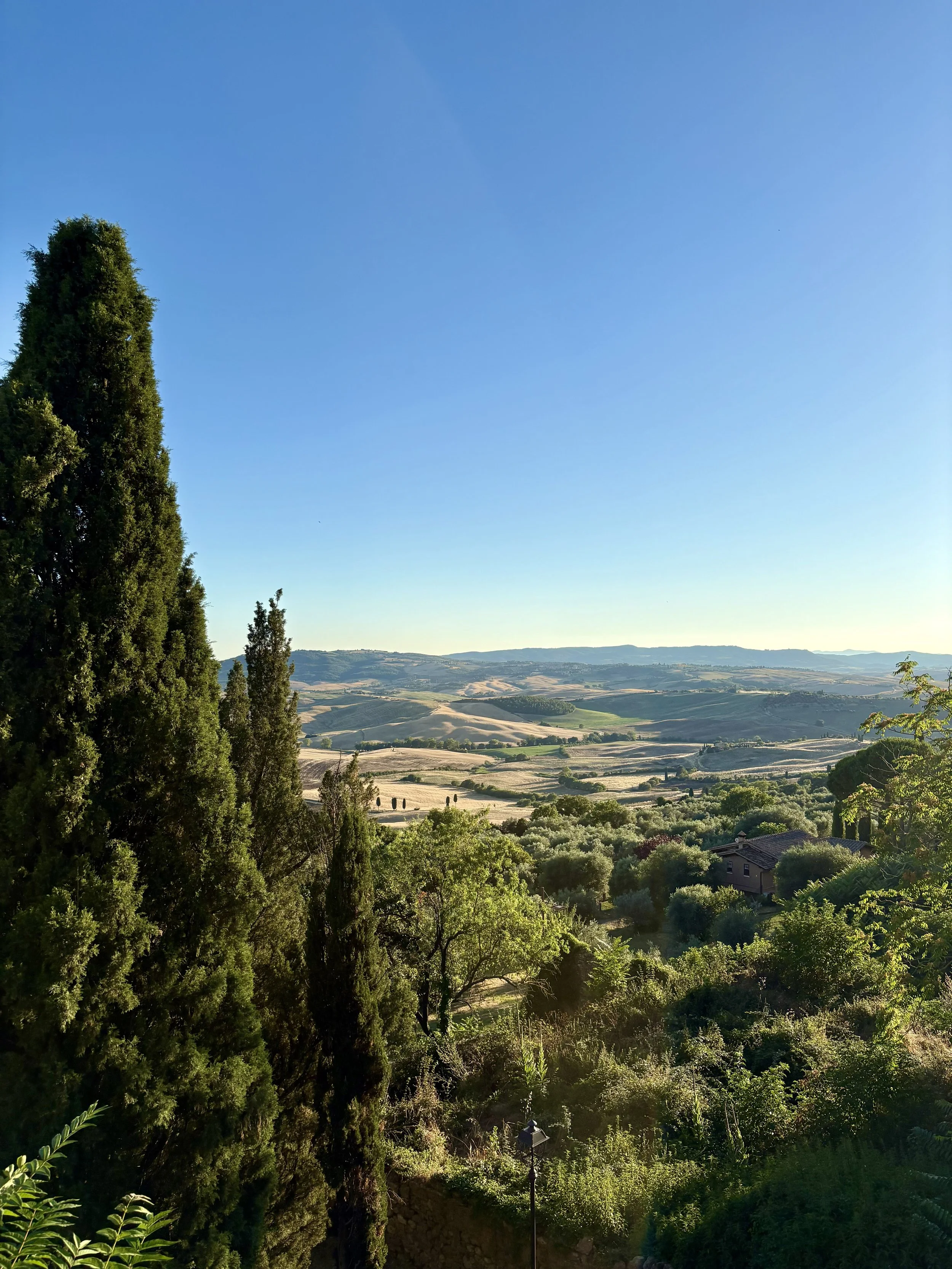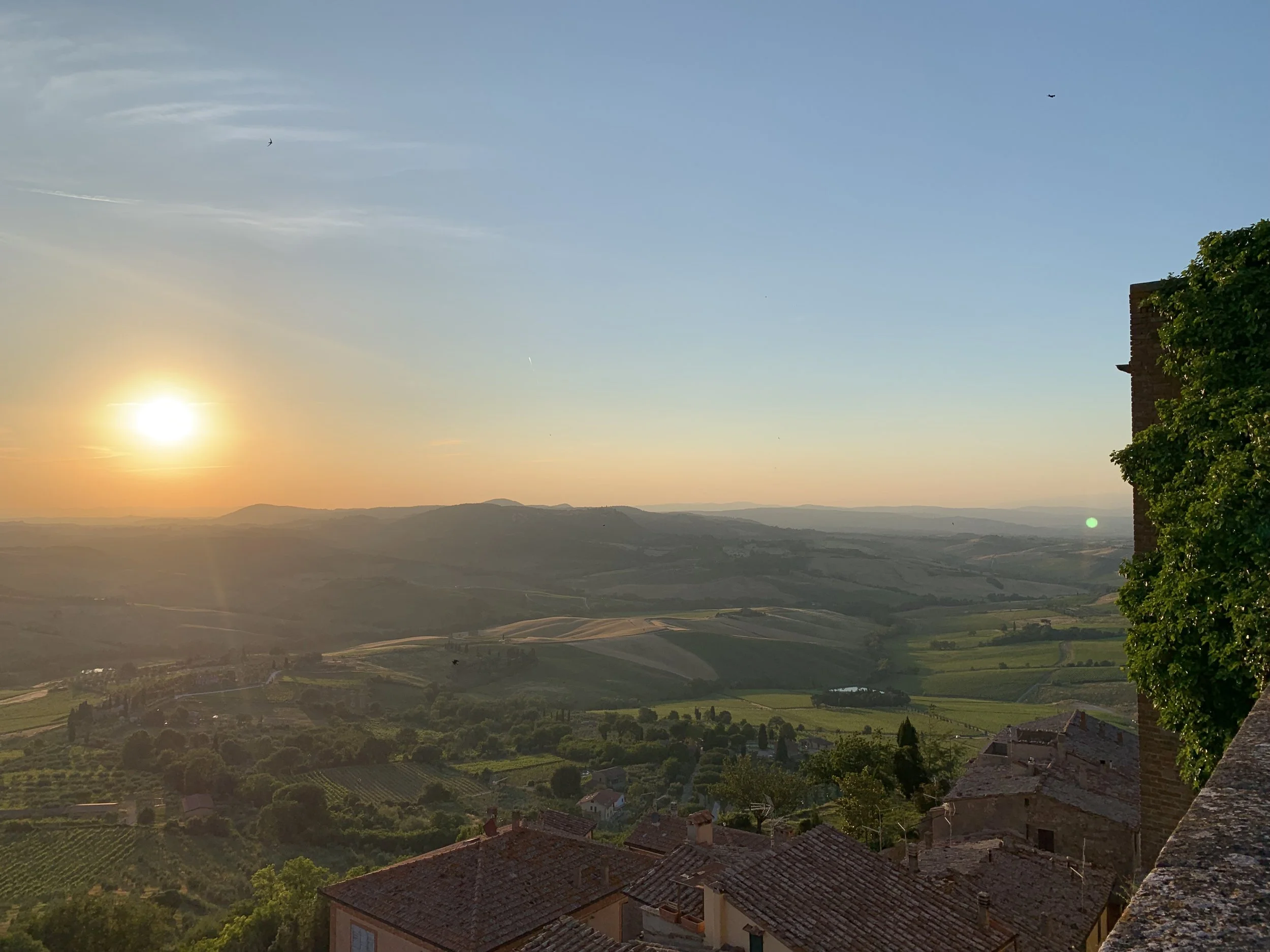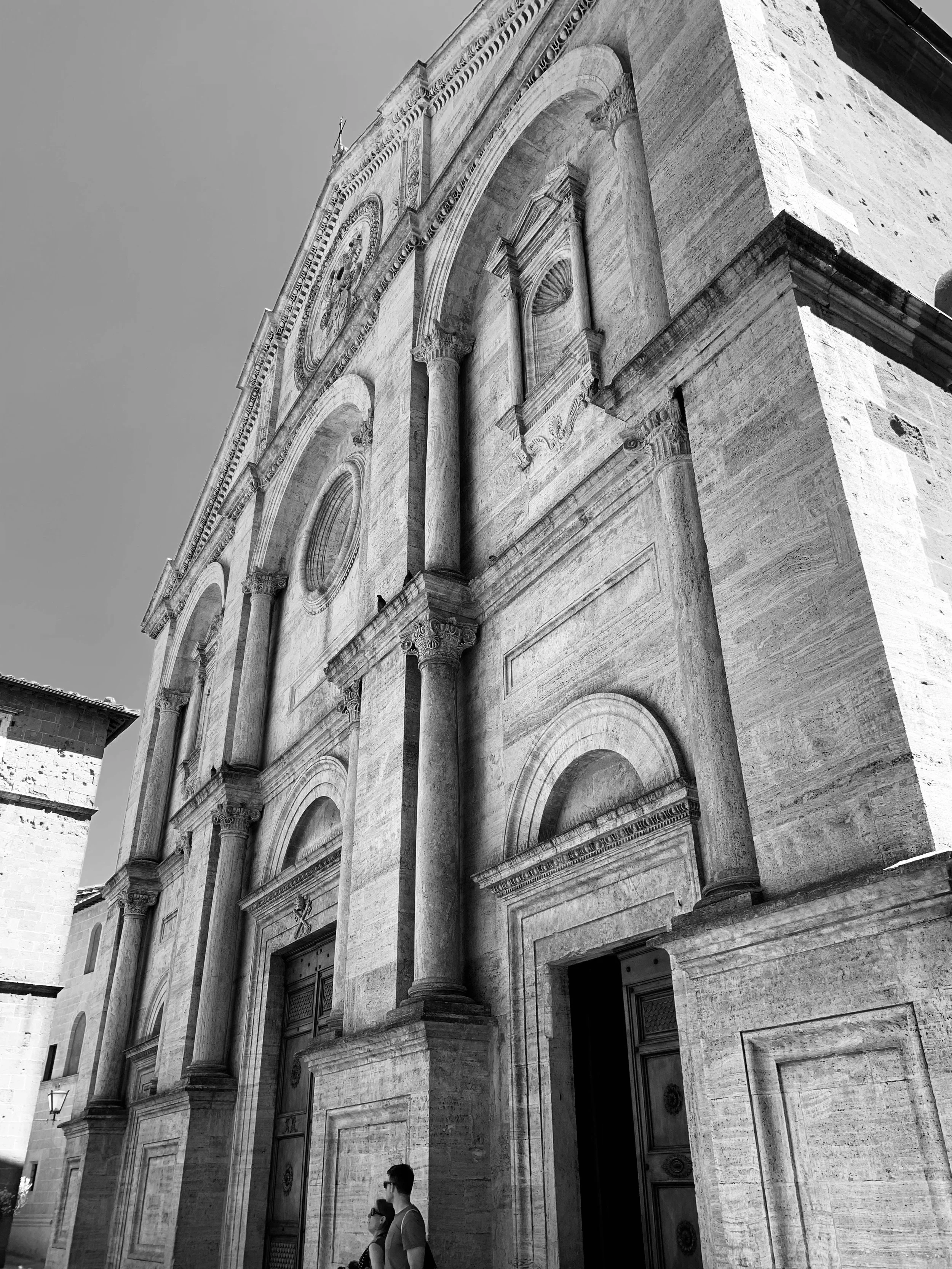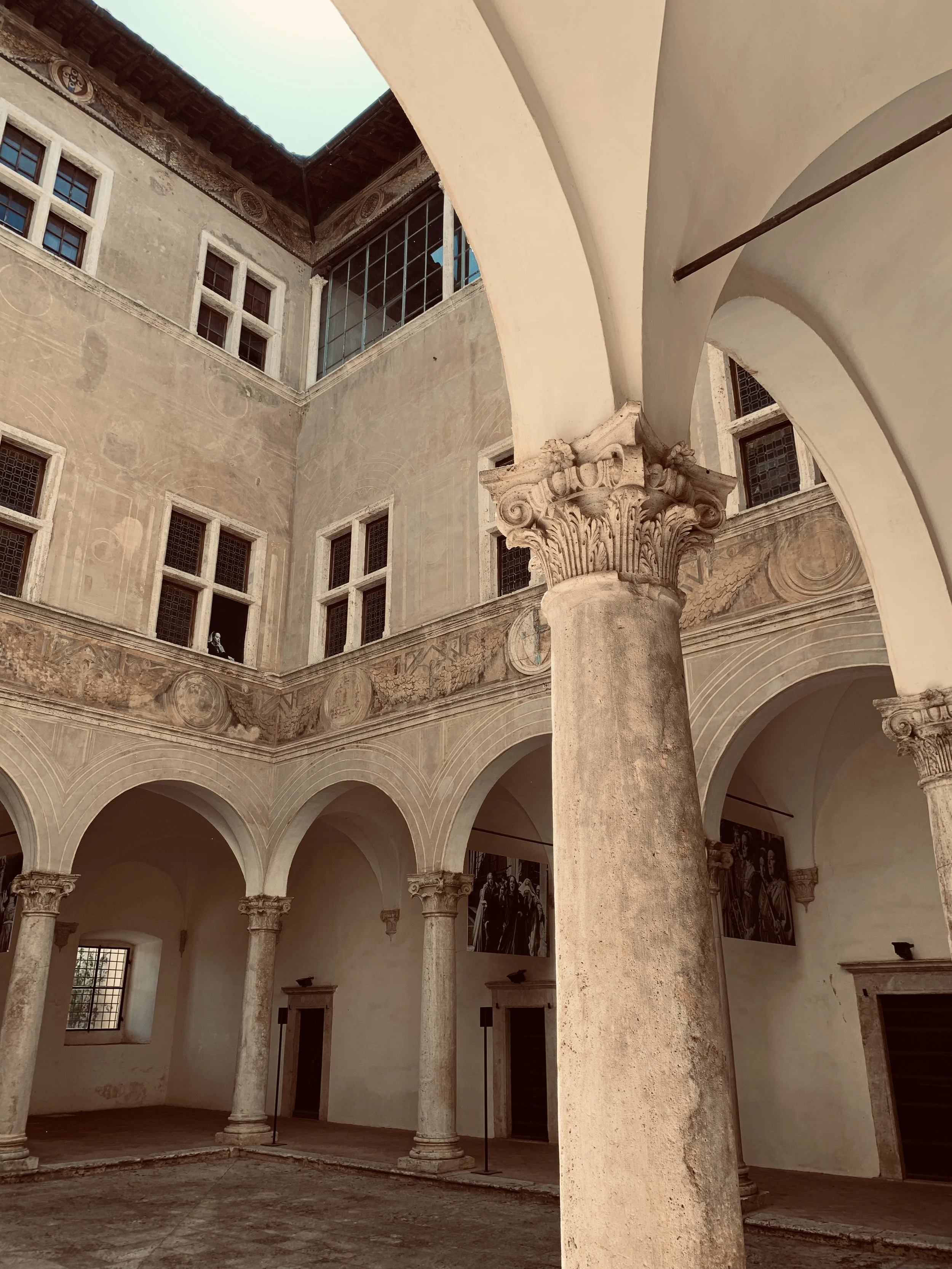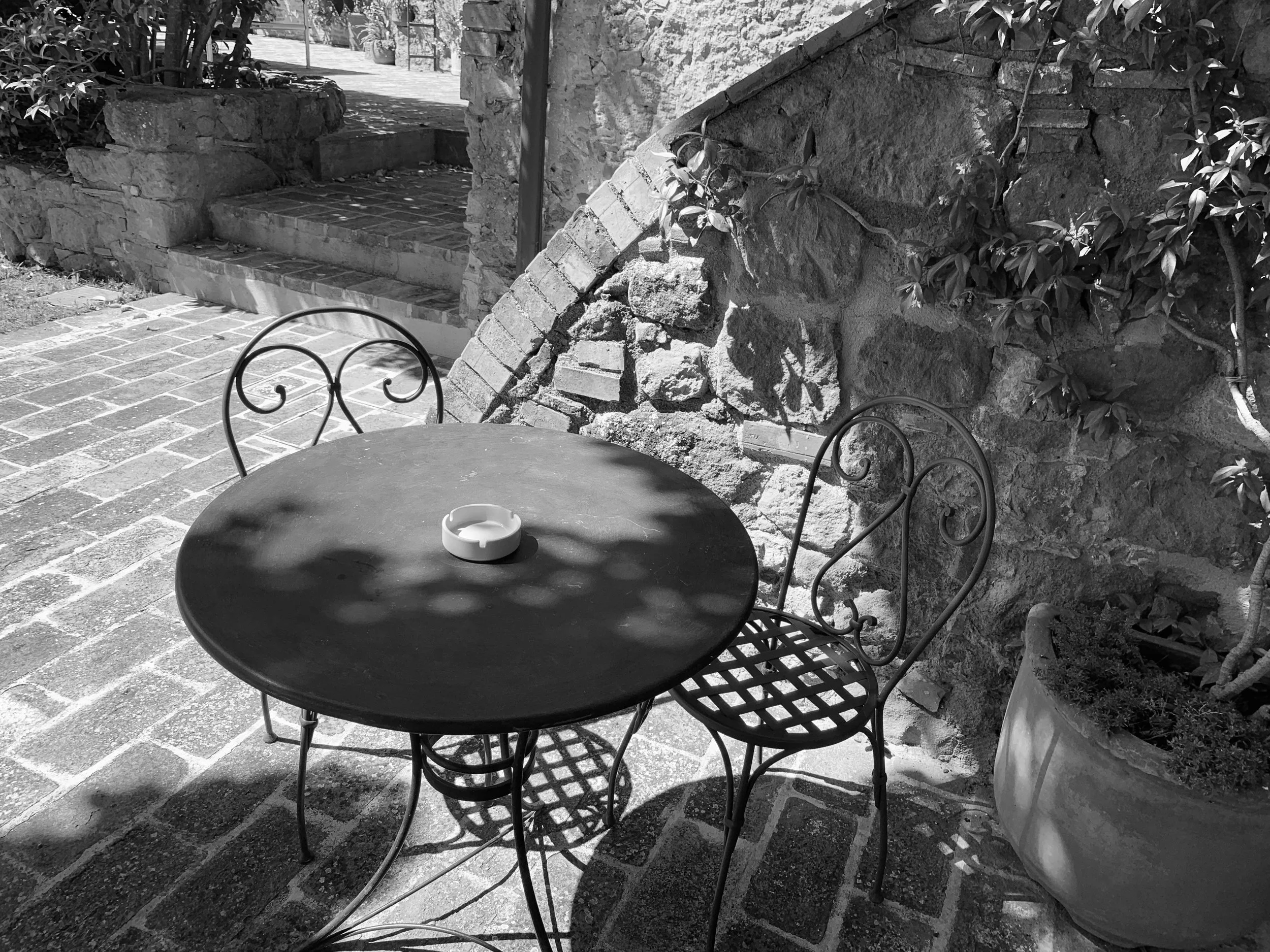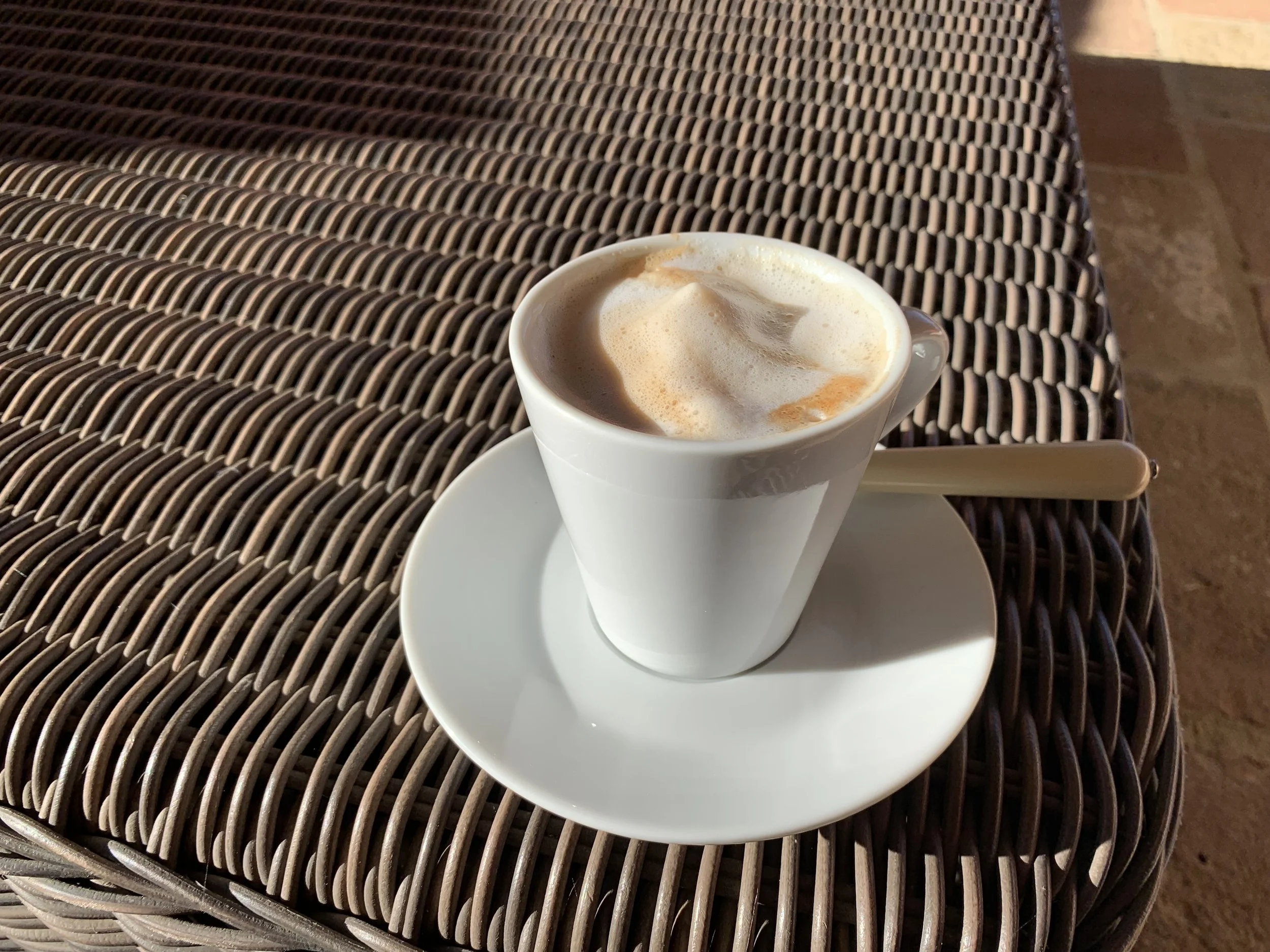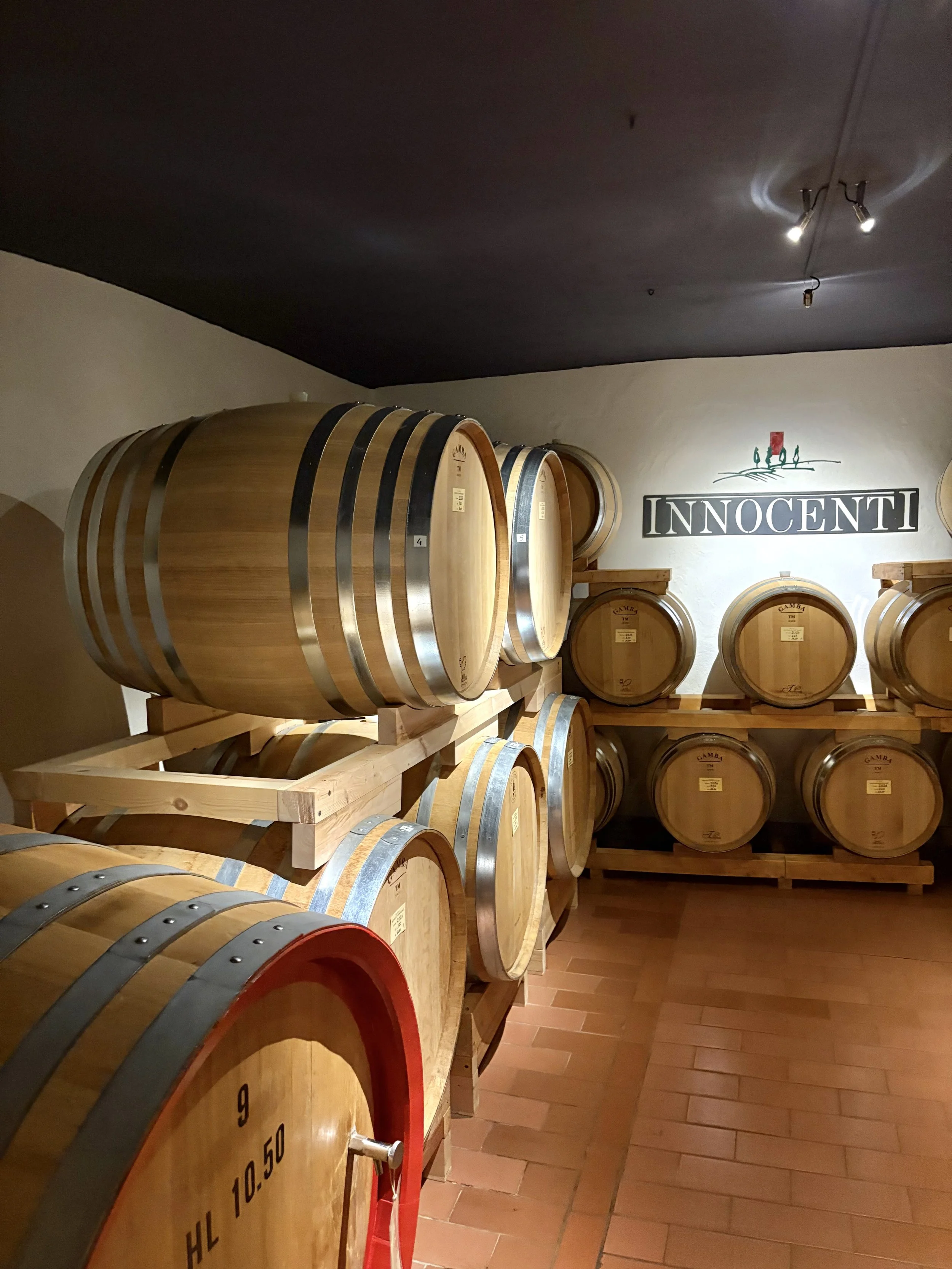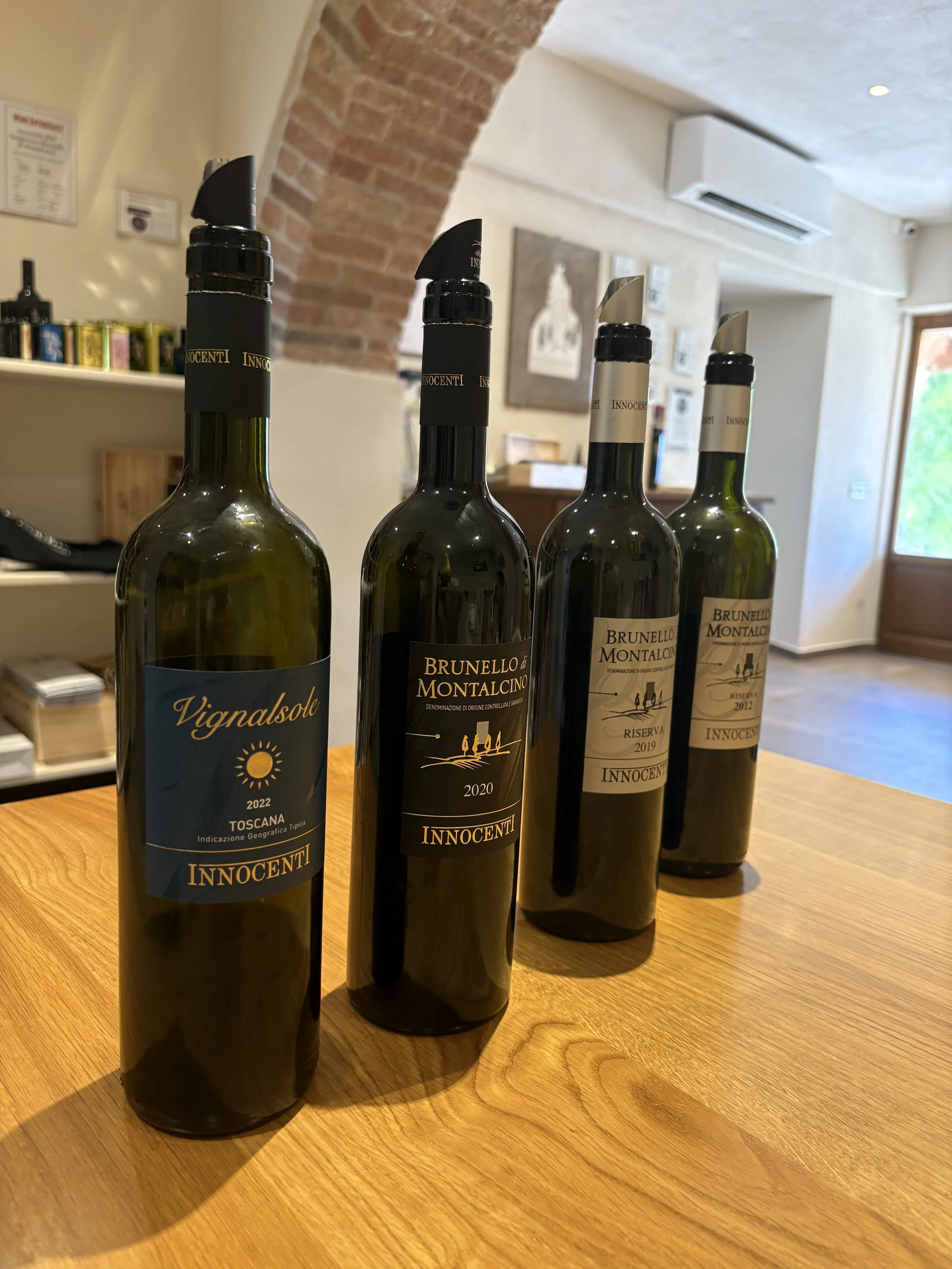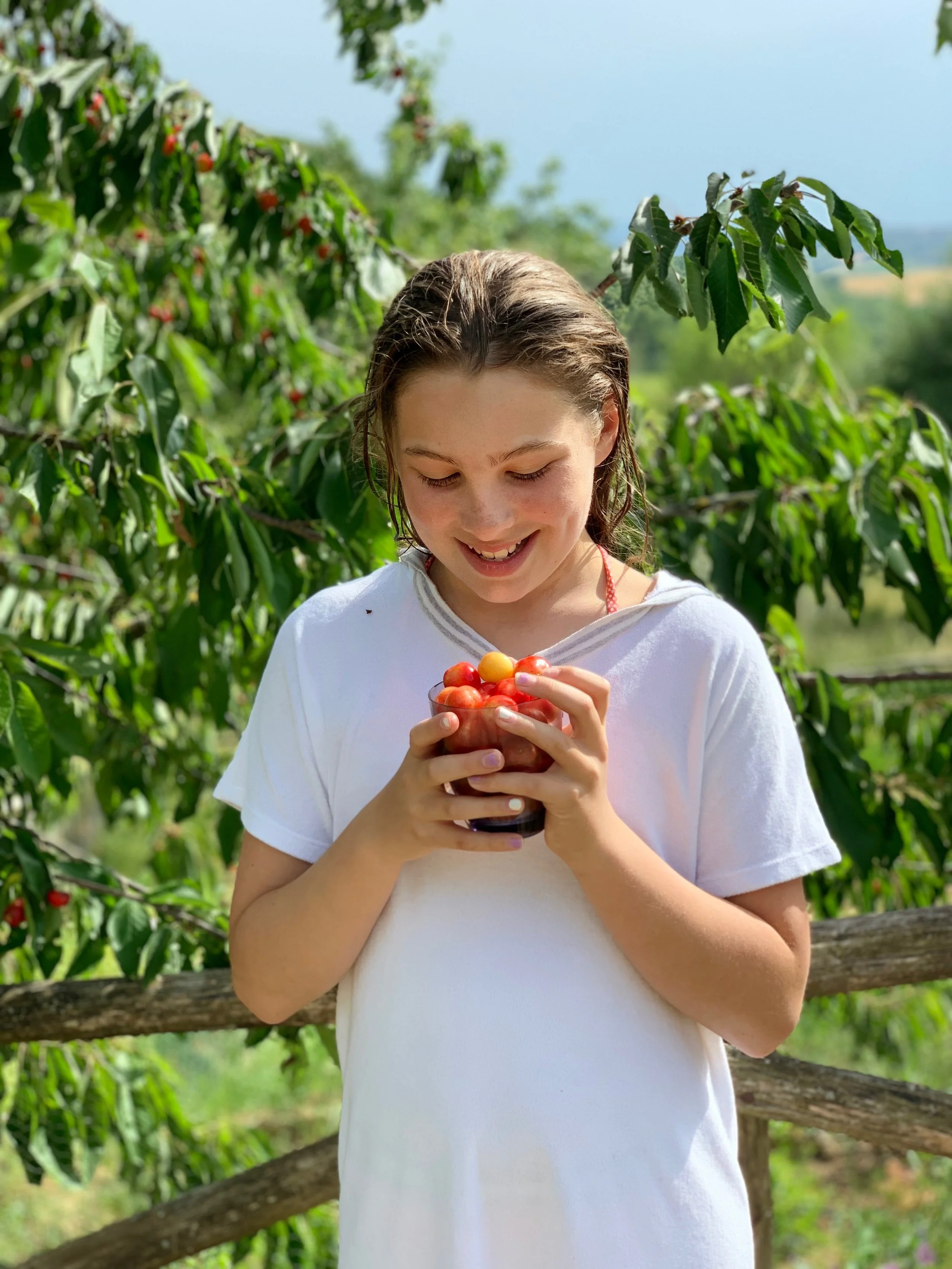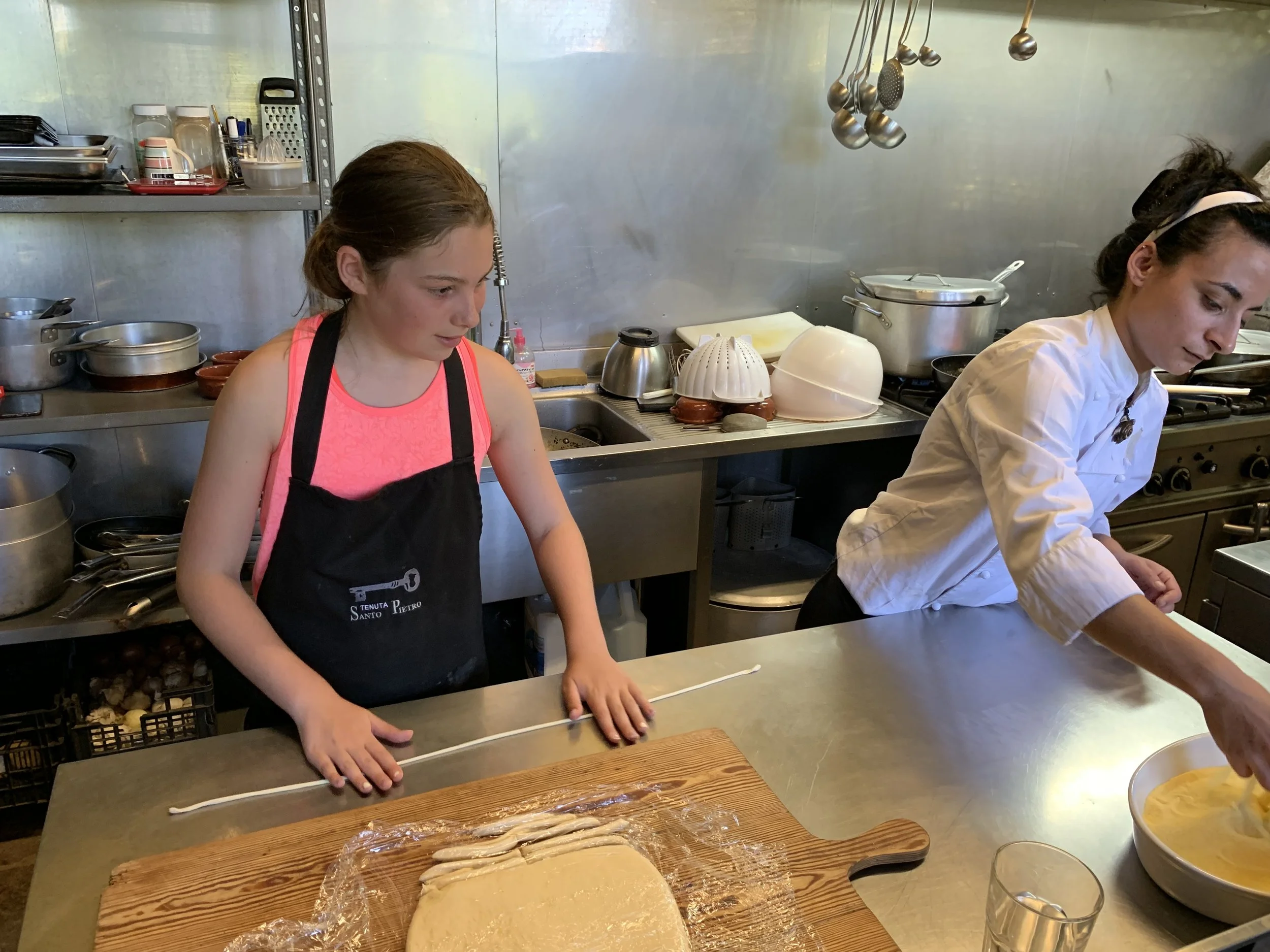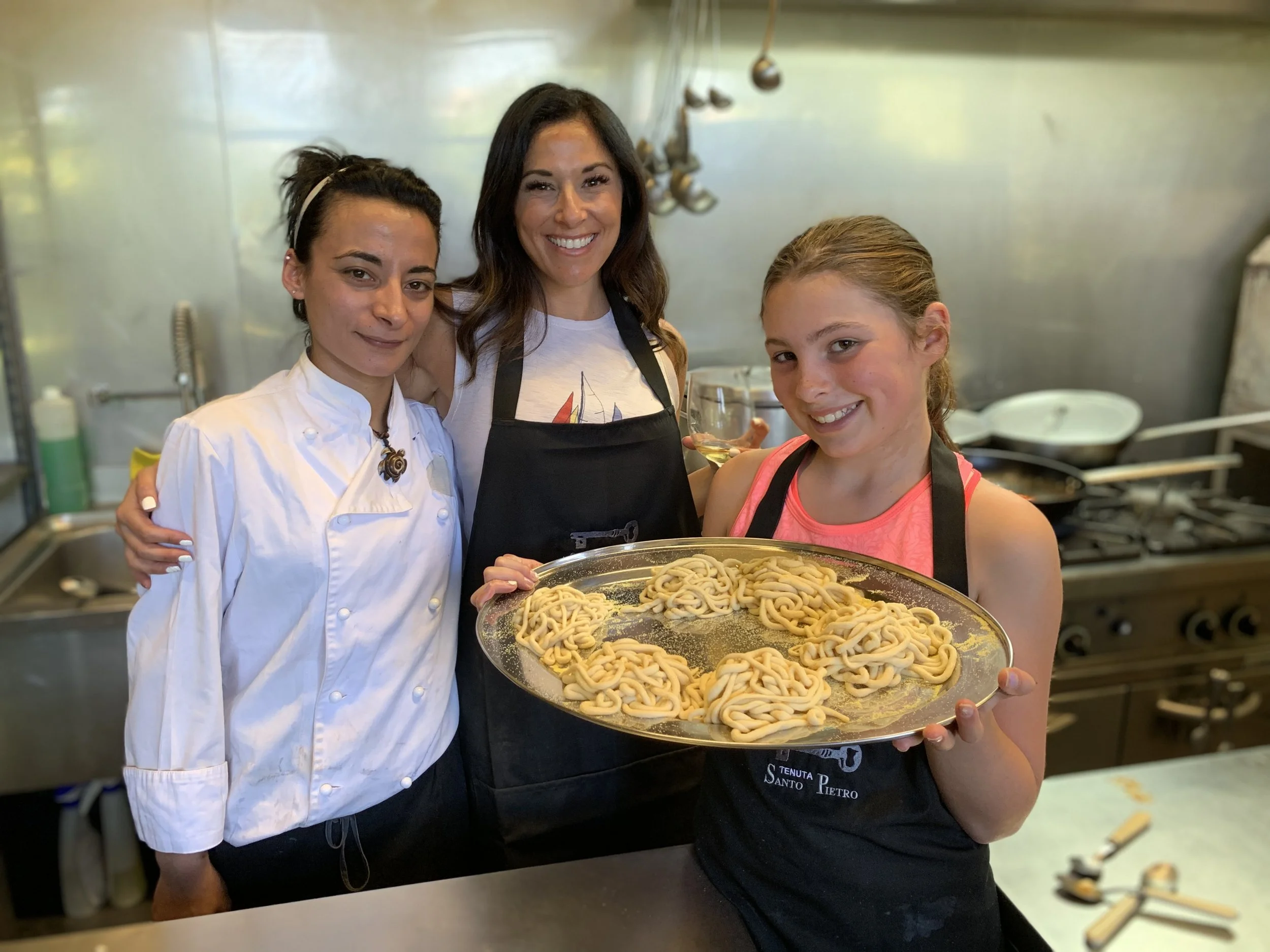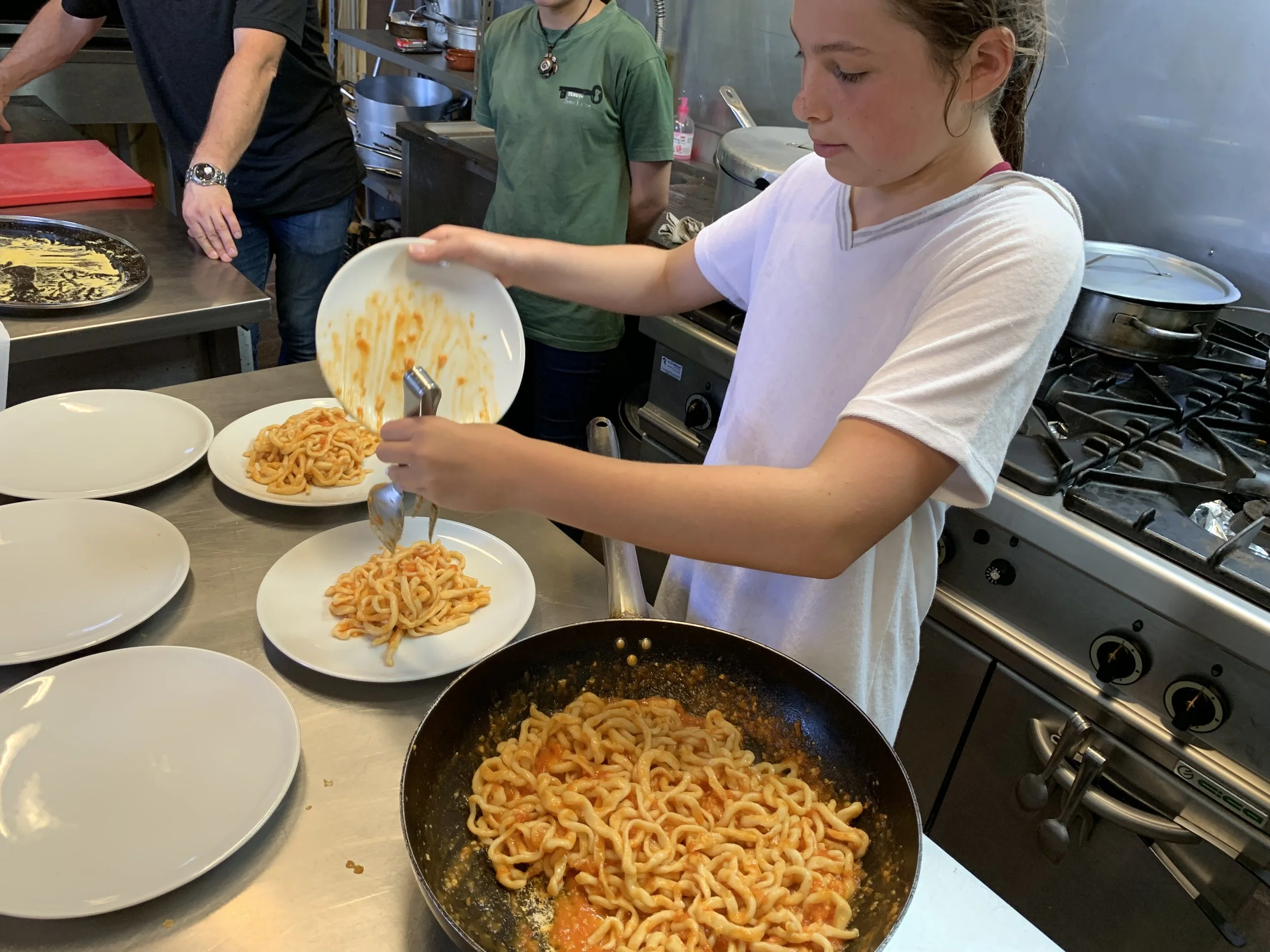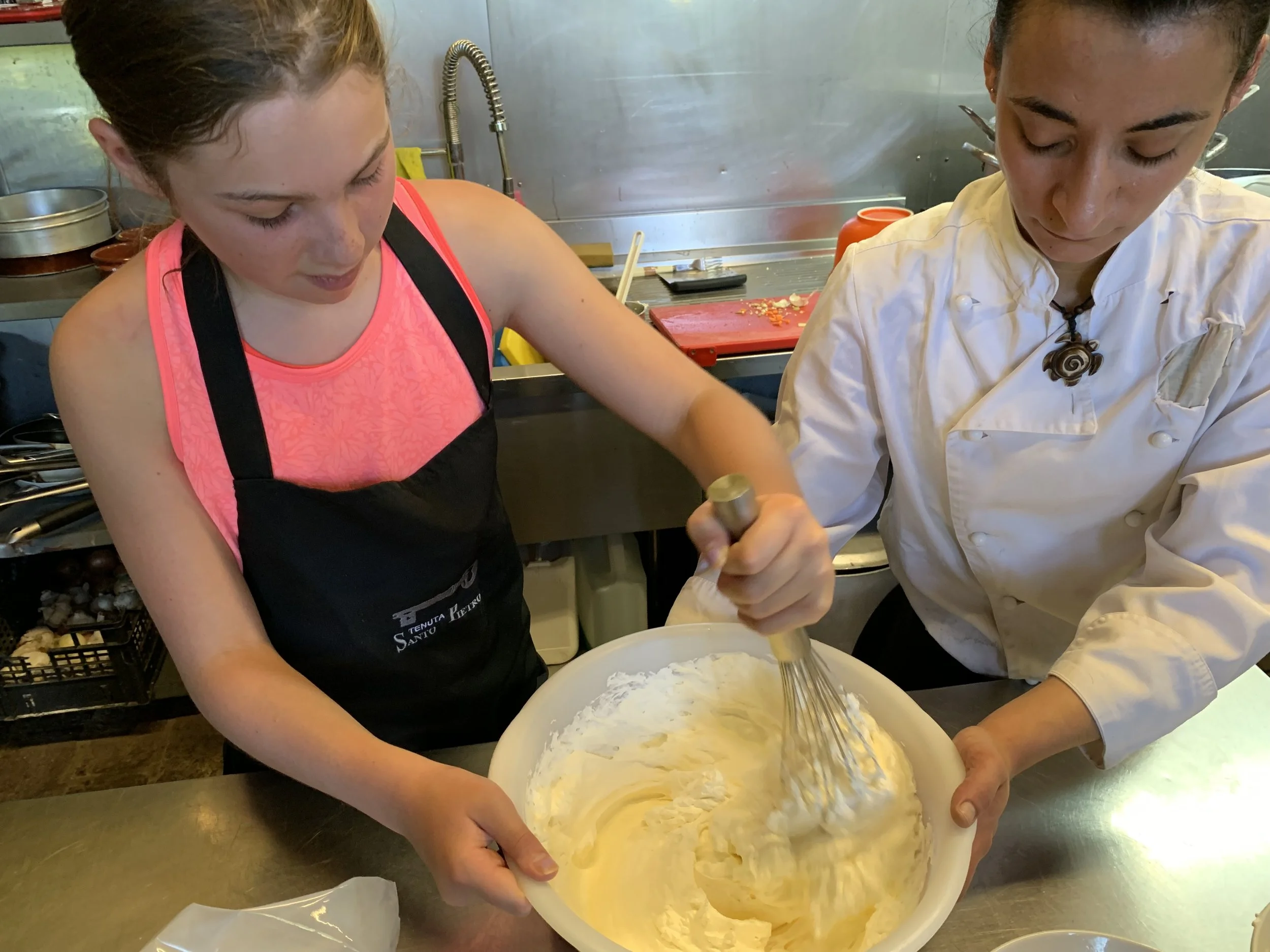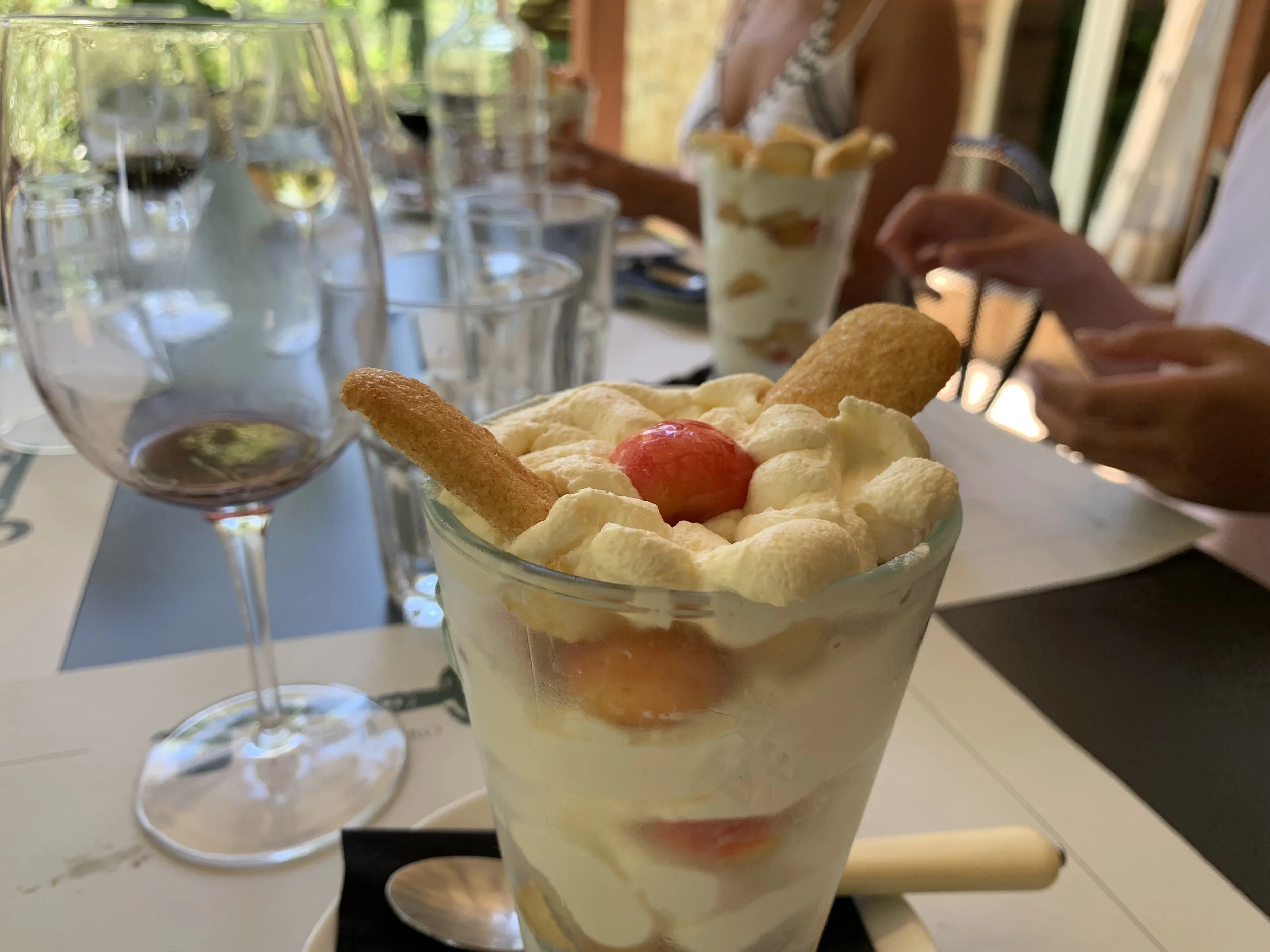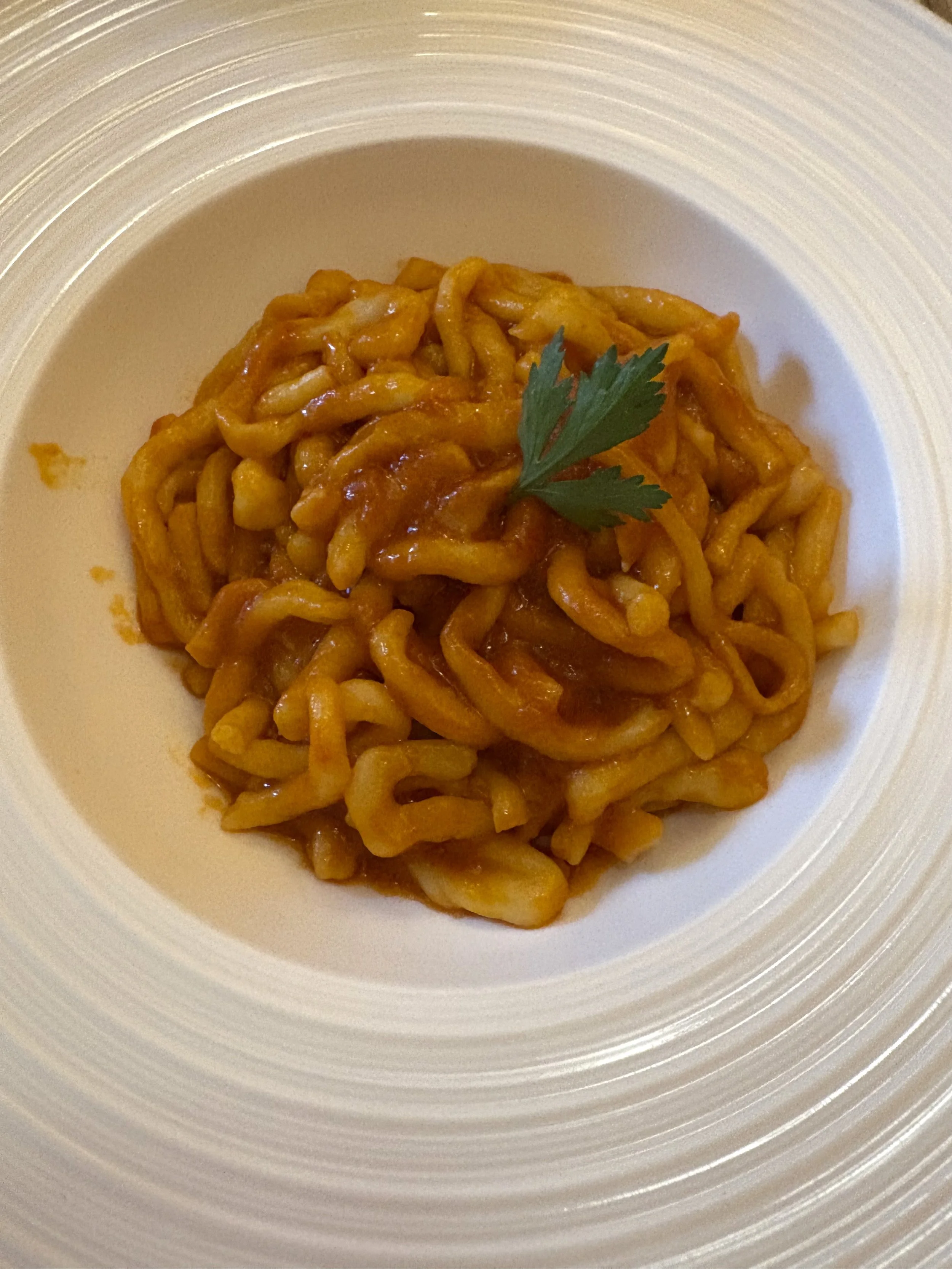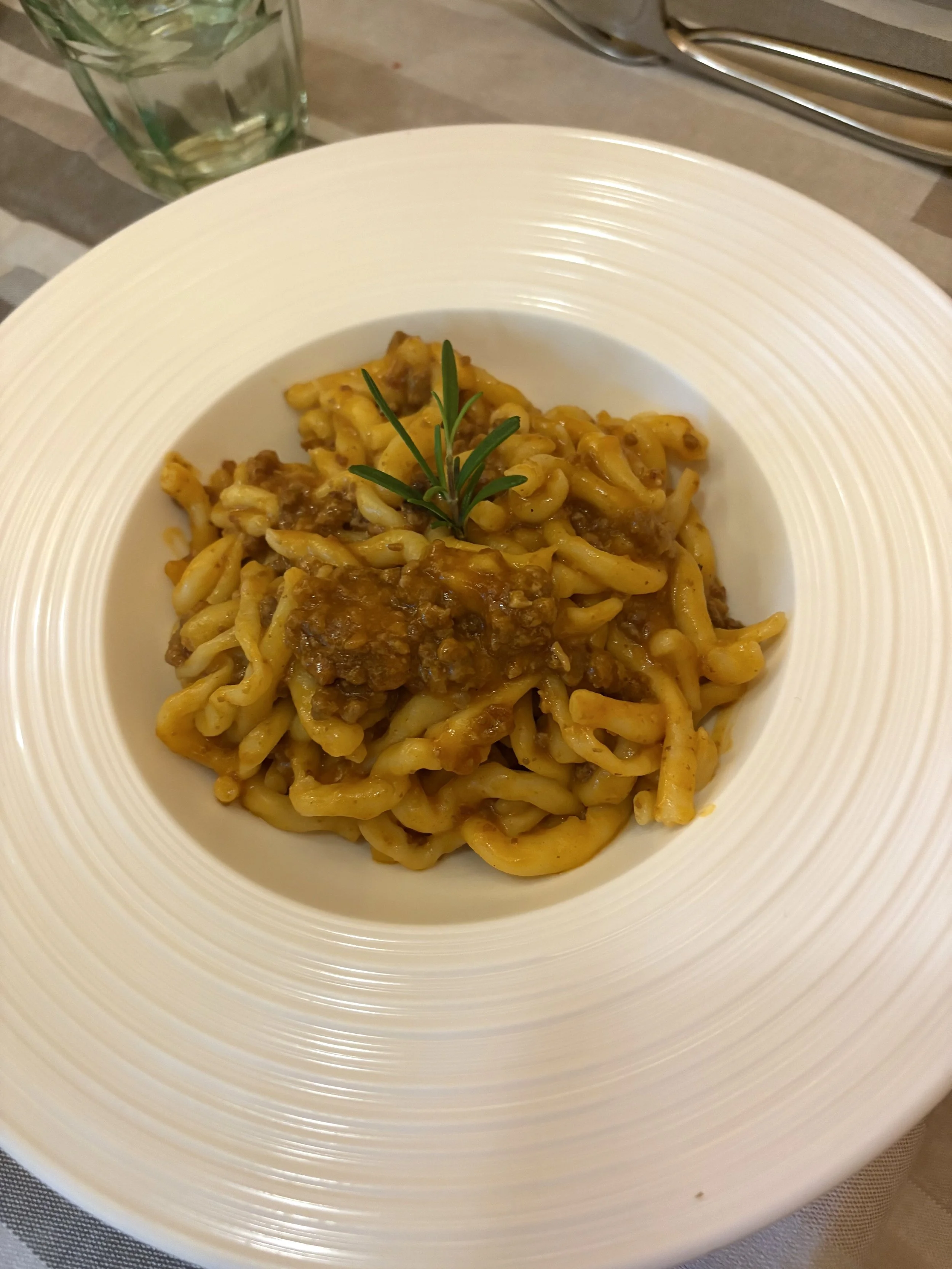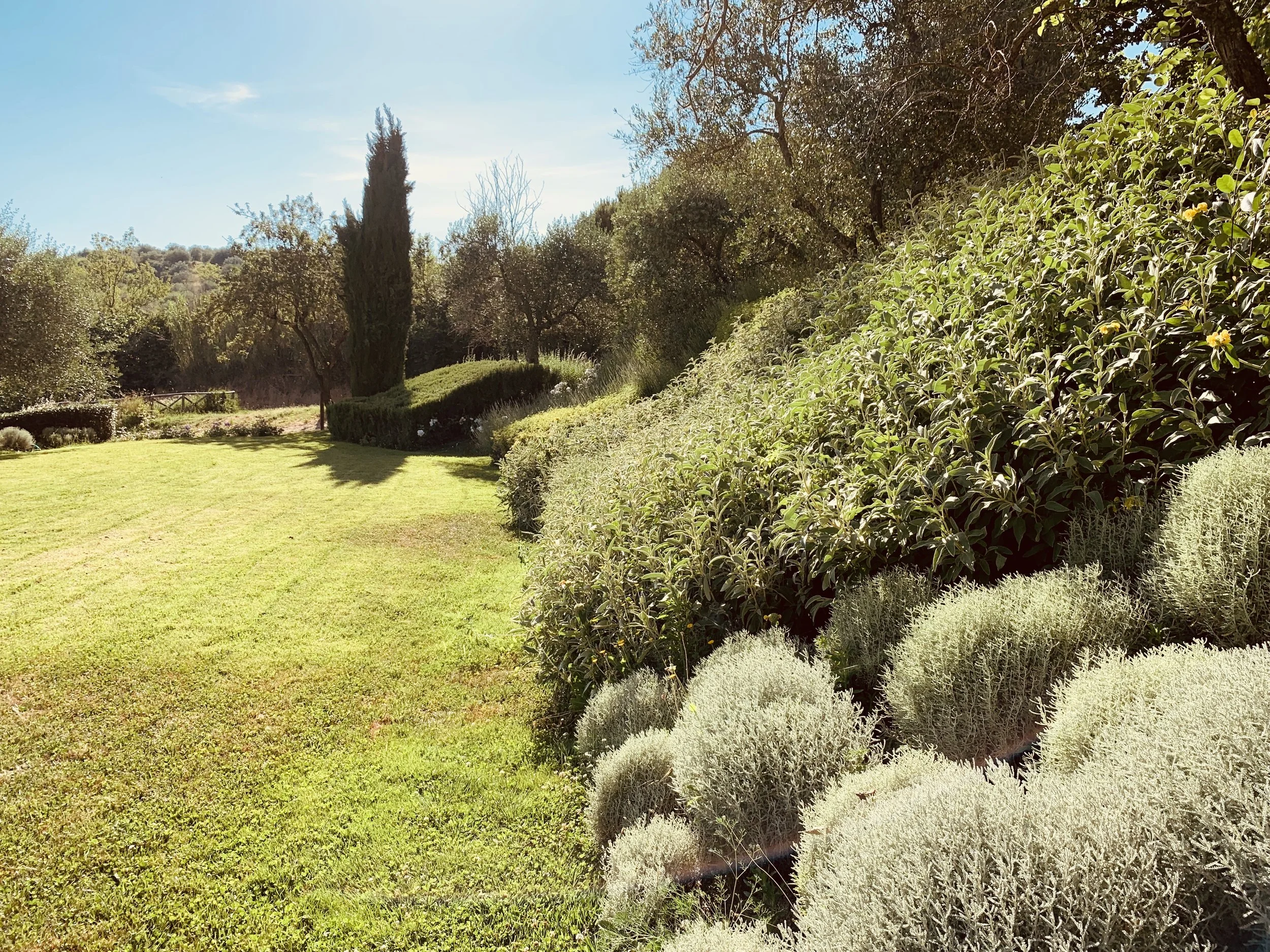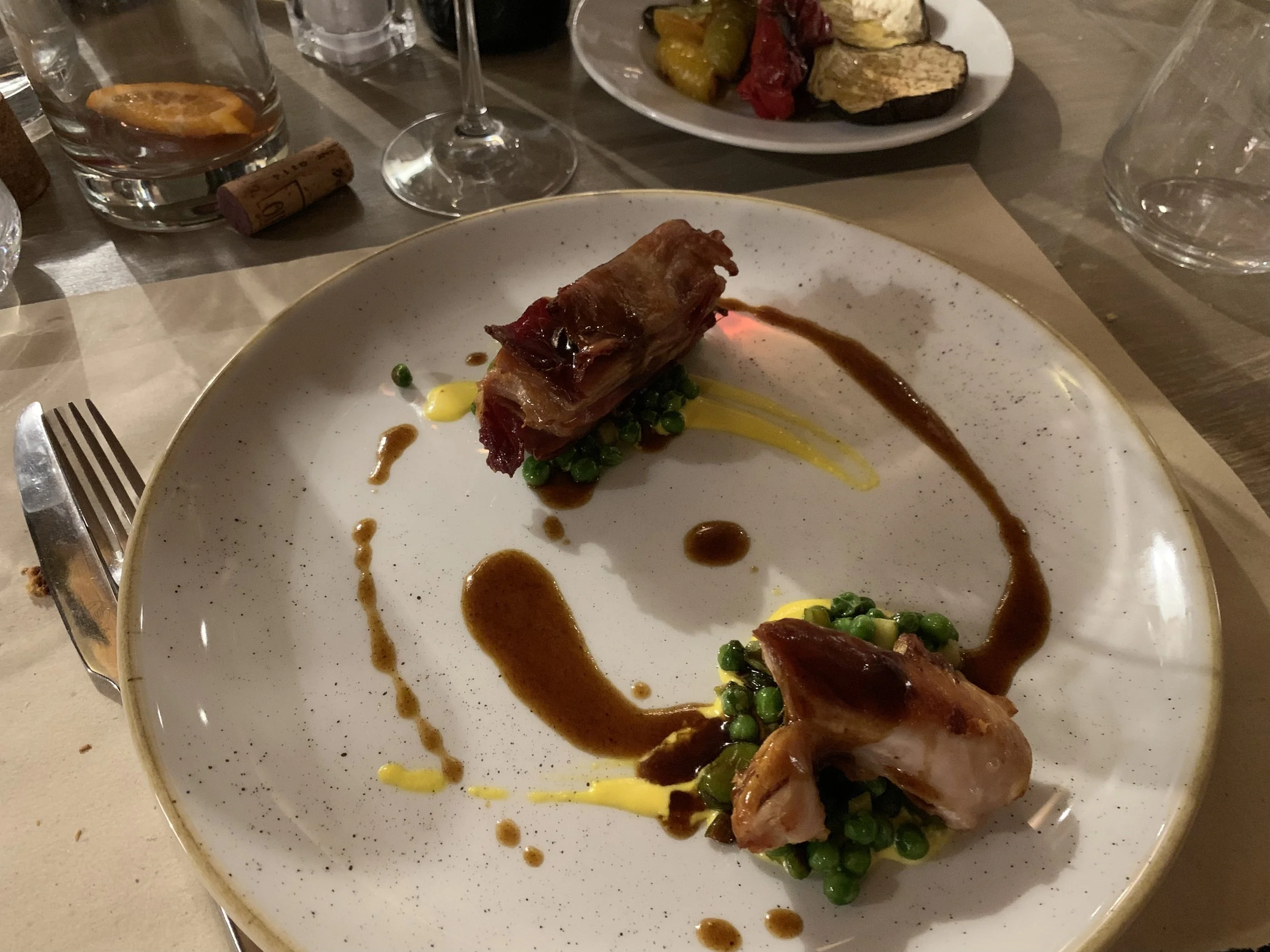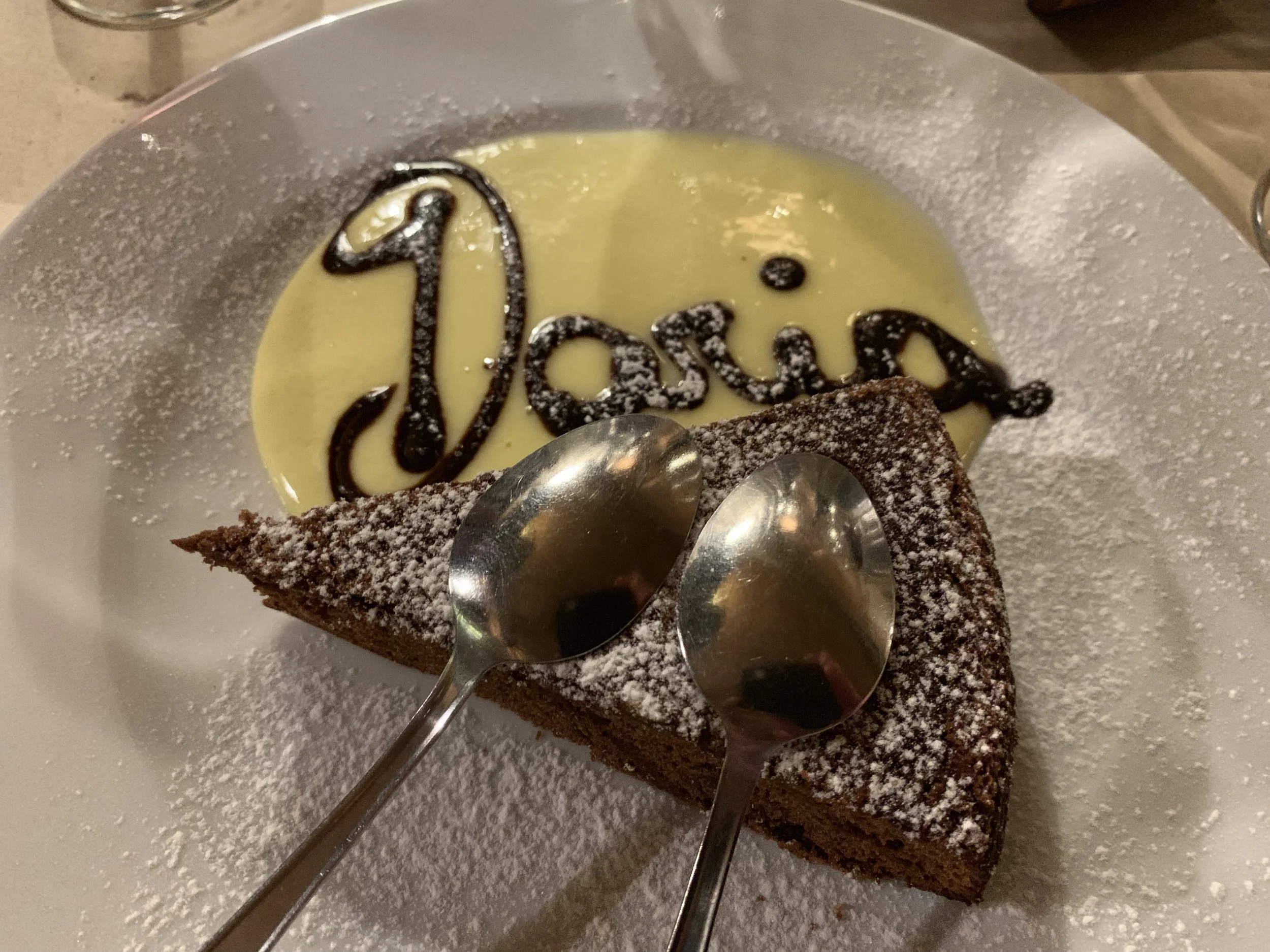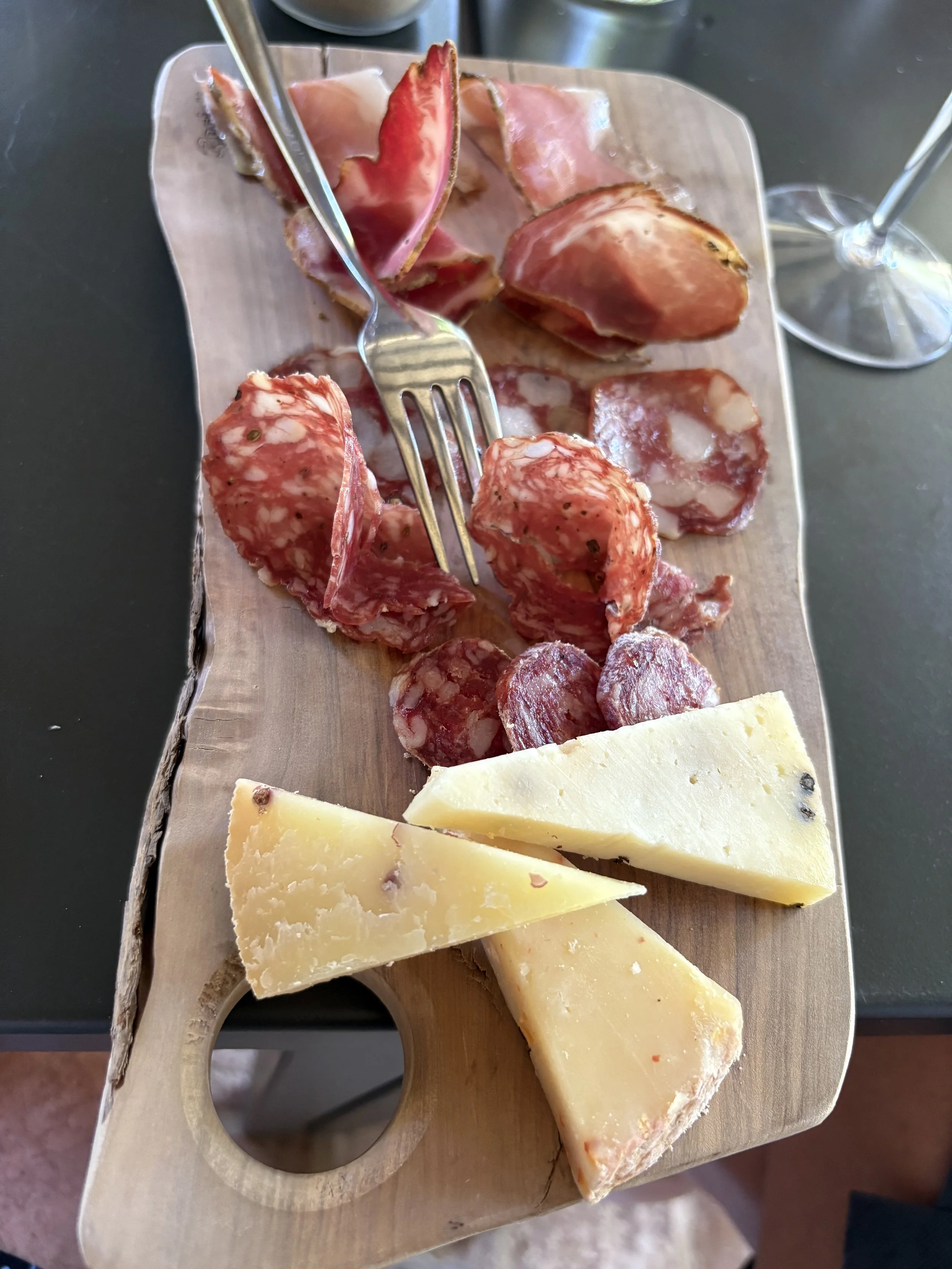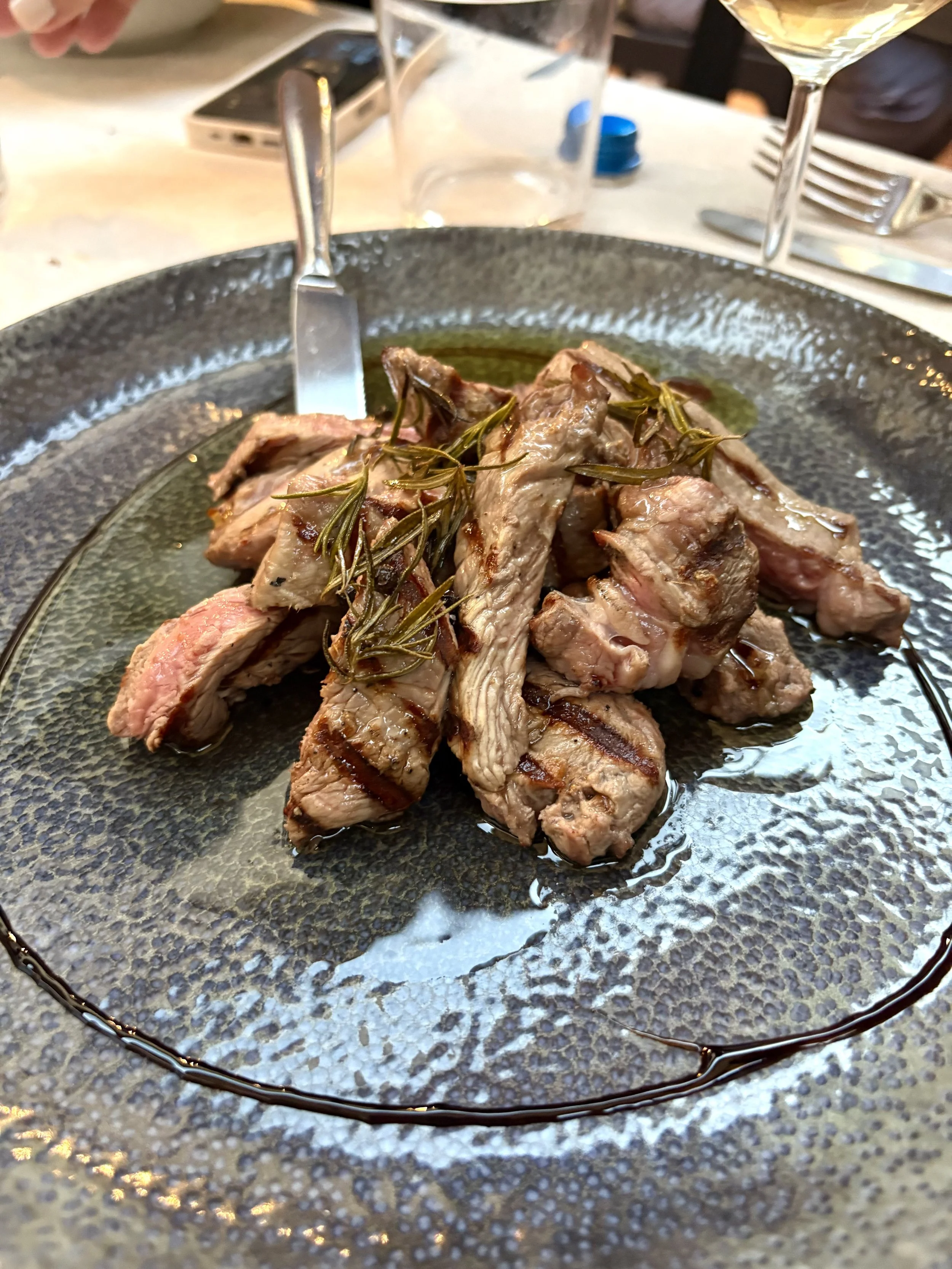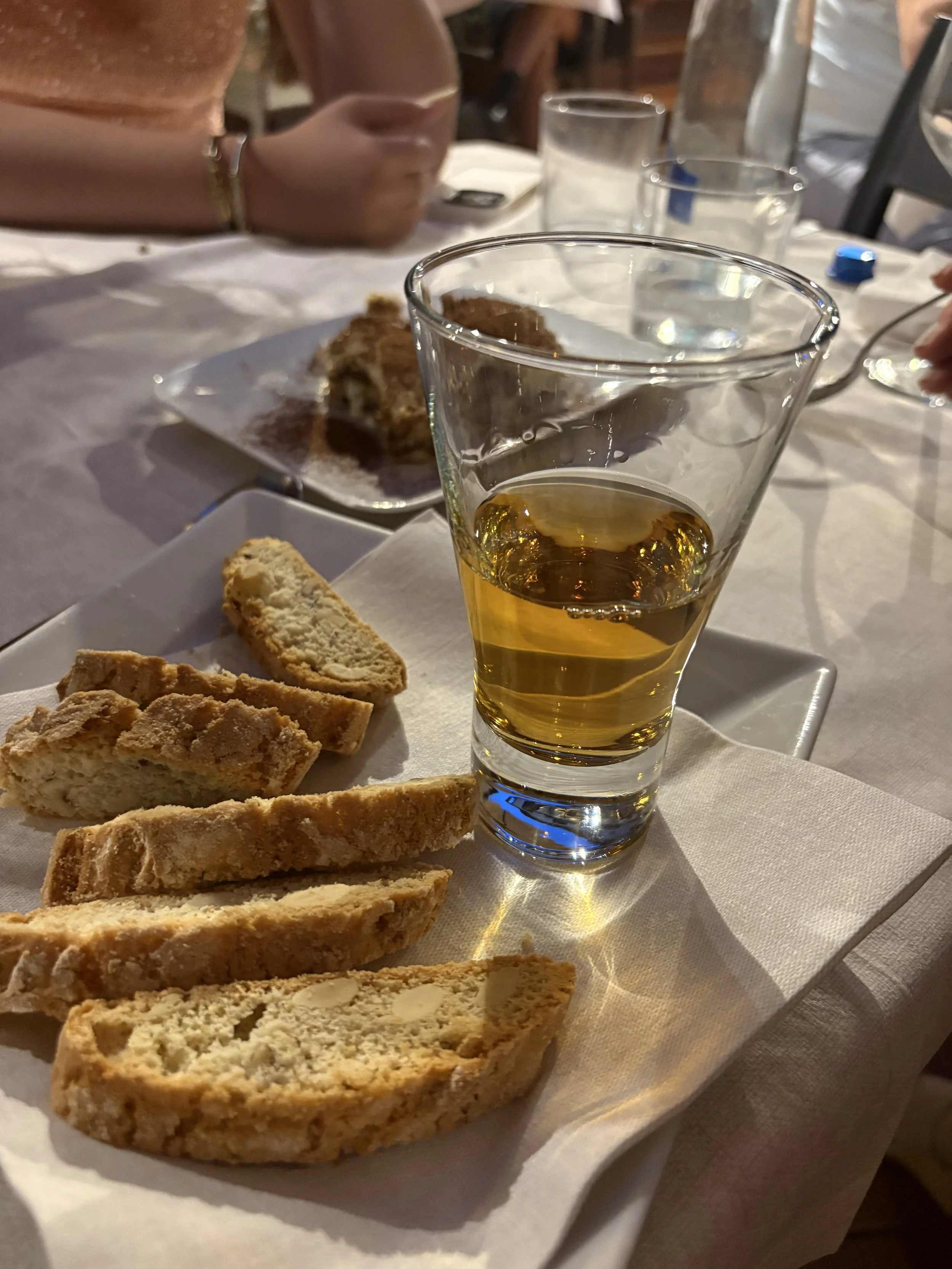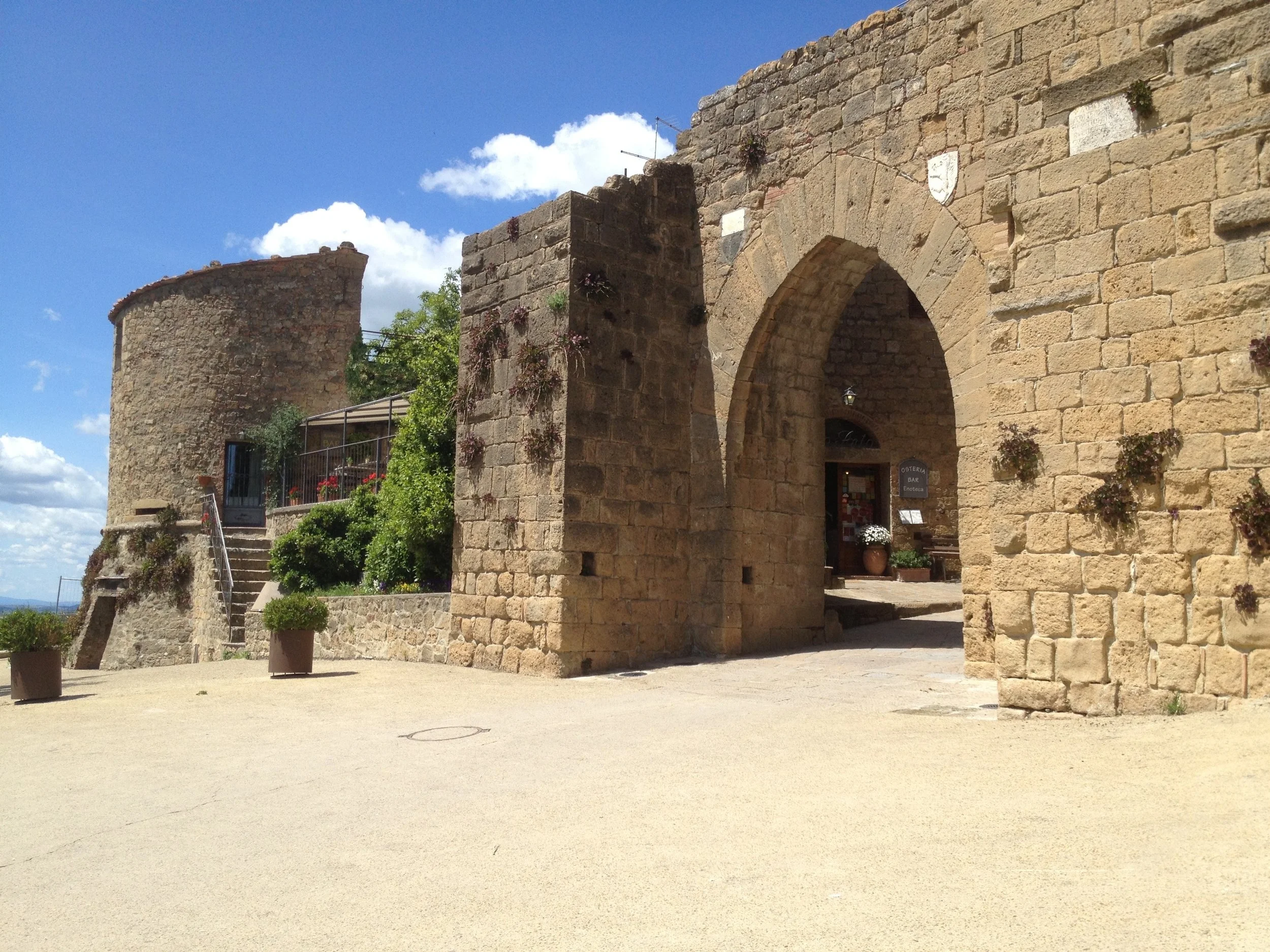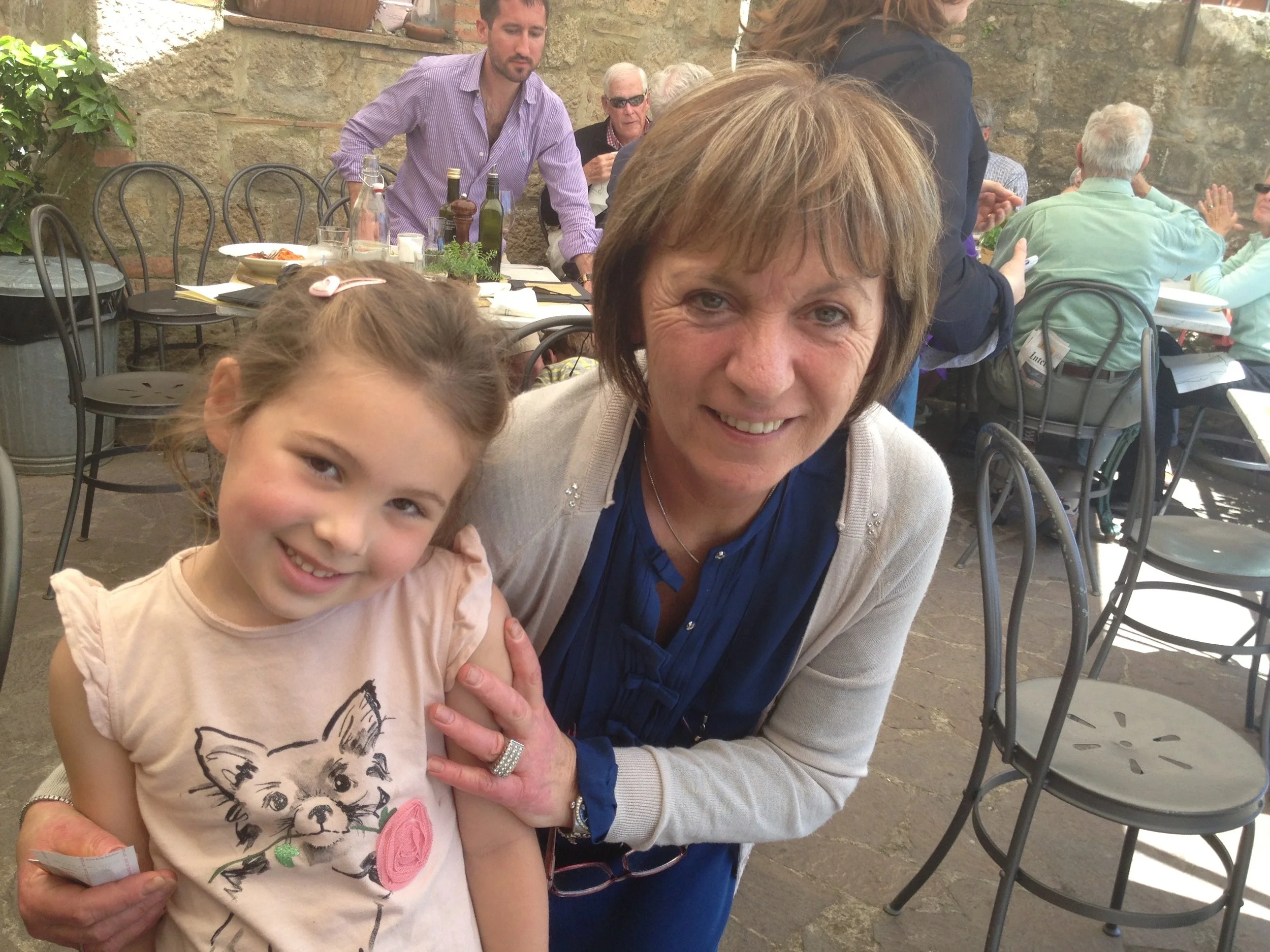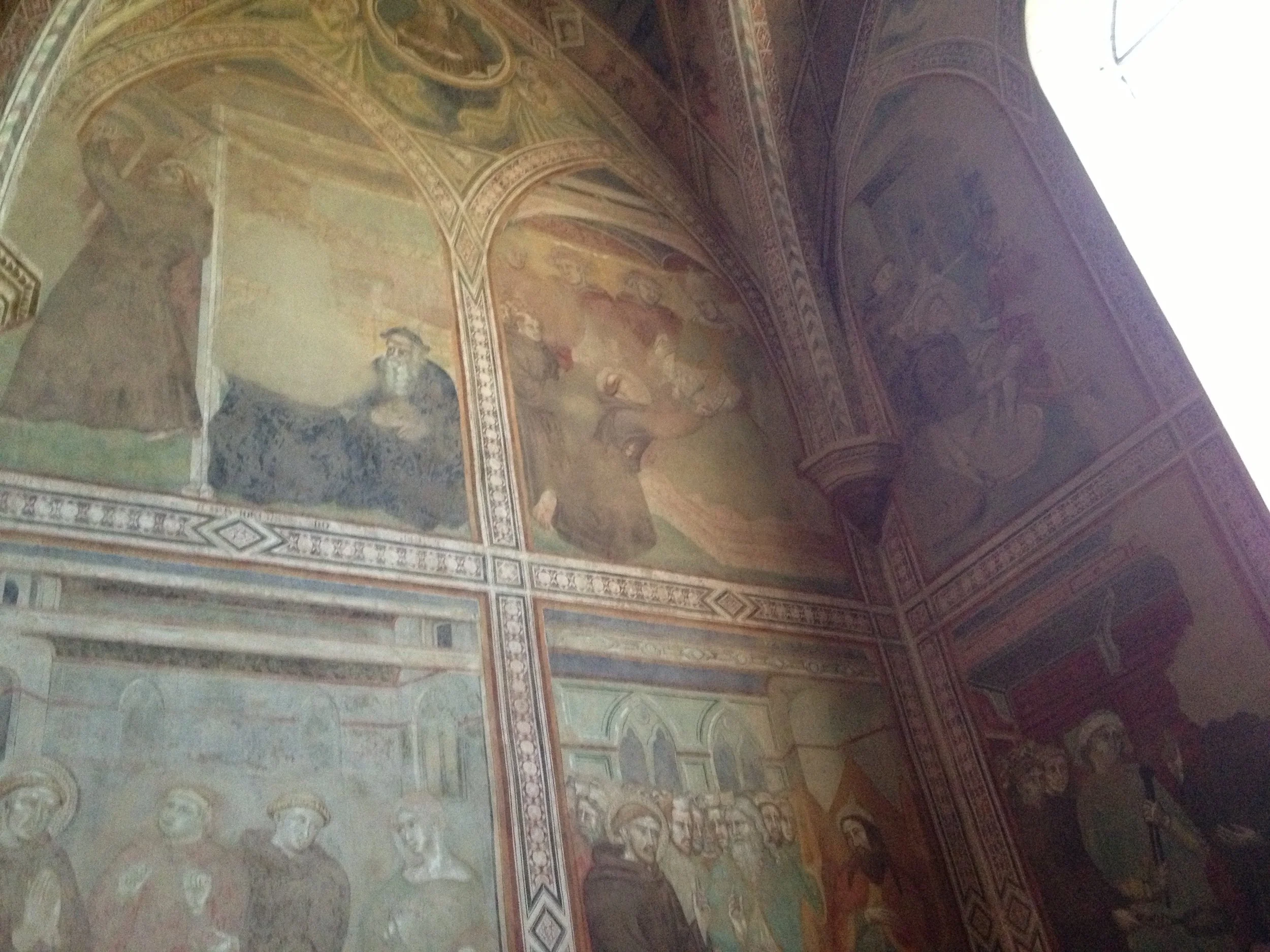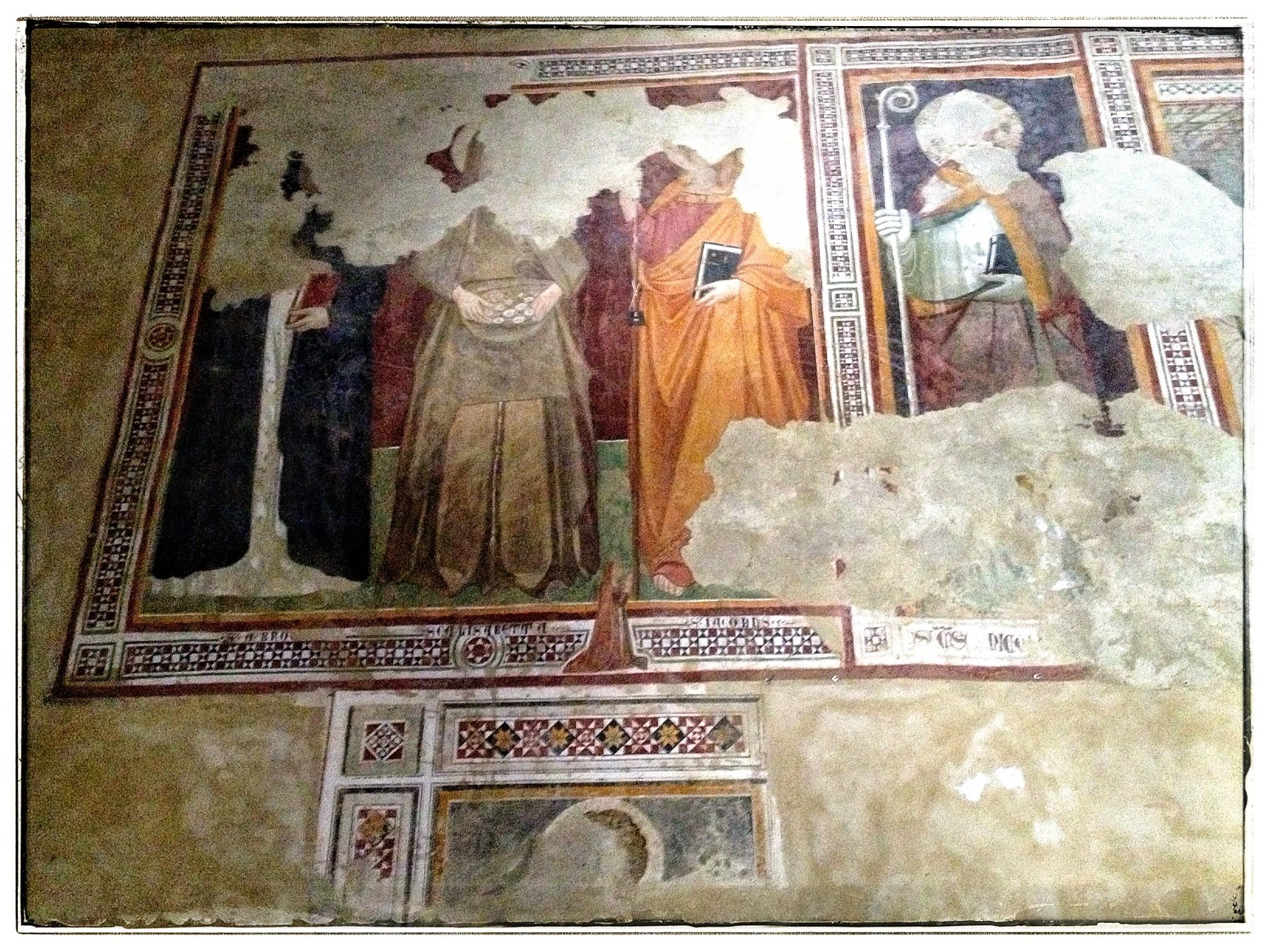Panzano to Pienza, Travels in Tuscany
We began traveling to Europe in earnest when my wife and I were just dating. One of our first trips, around 1997, was to Italy. We spent a few days in Florence, then rented a cottage (I wouldn’t call it a villa) just outside the town of Panzano, in the Chianti Classico region of Tuscany.
For me it still ranks as one of the best trips we ever took. Our little stone house was set on a hillside among vines and olive trees. We would sit by the pool and know the time of day from the ringing of the church bell in the nearby village (the world was so much simpler before smart devices).
Unbeknownst to us back then, Panzano was somewhat famous for the “Singing Butcher of Tuscany,” Dario Cecchini, who’s now known the world over, having appeared on TV with acclaimed chefs and travel writers including Mario Batali and Anthony Bourdain. Articles have been written about him in the likes of Travel + Leisure and Conde Nast Traveler, and the world’s food glitterati make their faithful pilgrimages to his macelleria, where Dario sings opera as he butchers whole animals, including the coveted Chianina cows used for Bistecca alla Fiorentina. Only in Italy….
One of my fondest memories of that trip was our first dinner in Tuscany. We wanted something simple and local and our host referred us to a place across the valley in the little hamlet of Lamole. We sat on the terrace and watched the sunset as we sipped the house wine — Lamole di Lamole, made from grapes grown in vineyards just steps away. Maybe it was because I had fallen head-over-heels for the woman who would become my second wife, or maybe I’m just a sucker for a good plate of pasta with a view, but it all made for an unforgettable experience.
Since then we’ve returned to Italy maybe a half-dozen times, but never to Panzano. I think deep down inside we both know it was a special time in our lives, in a special place, never to be repeated.
Quintessential Tuscany
But we have found other special places and one of them is in the southernmost region of Tuscany, known as the Val d’Orcia, where one day about 20 years ago, by pure serendipity, we stumbled onto the town of Pienza.
Situated roughly half-way between the two more famous towns of Montepulciano and Montalcino, Pienza is the quintessential Italian village, a living post card with wonderfully preserved churches and palazzos, quaint piazzas, and absolutely breathtaking views of the countryside from the perimeter walls. No wonder it’s a UNESCO World Heritage Site.
The village and surrounding Val d’Orcia hills are exactly what you probably imagine when you think of Tuscany. Fingers of cypress trees tower around stone houses and along country lanes. And the landscape, in a dozen shades of green and tan, appears almost liquid as the undulating hills float off into the distance, shifting color with the setting of the sun toward the golden light of evening. You almost wonder if the farmers receive stipends from the government to keep their fields, vineyards and olive groves looking so pristine and photo-worthy.
Pienza and the Val d’Orcia Countryside:
Whenever we visit, we stay at Tenuta Santo Pietro, a 12-room inn located in a former convent originally built in the 13th century. But make no mistake, the austerity once practiced by the nuns who lived there has now been replaced by luxury and refined comfort. Each room is unique and beautifully appointed; gardens, olive trees and vines surround the main building (the estate makes wine and olive oil); there’s a pool with views of Pienza a few kilometers to the west; and the professional kitchen turns out a satisfying breakfast every morning, as well as lunch and dinner, with all the ingredients locally sourced and seasonal.
The town of Montepulciano, about a 15-minute drive to the east, is magnificent but bigger and somewhat more crowded than Pienza. The hike up the steep cobbled streets can be challenging on a hot summer day but the views are well worth the effort.
The wines of Montepulciano are world-renowned, especially the Vino Nobile de Montepulciano, a red made predominantly from the Sangiovese grape. For years I’ve subscribed to a newsletter from Italian Wine Merchants in New York City and they once highlighted a small local producer — Il Macchione. On one of our earlier trips we decided to drop in for a wine tasting and had to knock on the door since nobody was around. Eventually a young guy emerged literally in his pajamas, thrilled that two Americans had heard about his family’s wine, and having no idea they had been featured in a New York City newsletter. He and his brother led us into the dusty cellar where the wines were aging in barrels the size of a box truck. He proudly drew the wines directly from the barrels and we spent about an hour tasting and hearing about their family’s background. These people were farmers, not investment bankers or tech entrepreneurs who decided to spend $100 million on a wine estate in Napa. It was about as authentic as can be.
Tasting Brunello di Montalcino
On a recent trip, our hosts at Tenuta Santo Pietro set us up with a tasting at a Brunello di Montalcino producer — Innocenti. I was hoping to go to Argiano, a stunning property dating back to the 16th century where we had tasted wines before. But times had changed, a reservation was required, and they were fully booked that week.
No matter, the Innocenti experience was terrific. The only hiccup — we used Google Maps to find the place which took us along miles of unpaved roads that eventually petered out at a country house in the middle of nowhere. Fortunately the owner and his daughter spoke English and they sent us on our way. “Just-a keep-a going-a right-a….”
At Innocenti we tasted four different wines while our host, Patricia, explained the unique traditions of Brunello that make it one of the most sought-after Italian reds. We sampled a 2020 Brunello as well as 2019 and 2012 Brunello Reserva’s (made only in certain years and aged for six years before release, versus five for standard Brunello’s). We also tried a 2020 Super Tuscan made with 50% Merlot and 50% Cabernet. The term “Super Tuscan” refers to a wine made without strict adherence to the DOC or DOCG regulations that prevail in many Italian wine-making regions. They usually include non-indigenous grapes in their blends, and are created according to the wine maker’s whim.
The Food Experience
Back in Pienza, one of our absolute favorite restaurants is Trattoria Da Fiorella, which we faithfully return to whenever we visit. Owned by a local family, the pastas are made fresh daily and you should try any of their variations on pici (pronounced “peachy”), a hand-rolled noodle like a thick spaghetti not found anywhere else in Italy. Pici might be served with a simple Alla Aglione sauce (made with fresh tomato and garlic), a meat ragu, cacio e pepe — there are many variations.
Tenuta Santo Pietro also features terrific pici on the menu. Some years ago we attended a cooking class at the property where we learned how to make the pasta. We also prepared a chicken dish and a special dessert — cherry tirsamisu. I know what you’re thinking, tiramisu is made with coffee, which is why the name means “pick me up.” The back story here is that my younger daughter, who was 11 at the time, found a couple of cherry trees on the property and got a kick out of picking handfuls of the ripe fruit, which we would all share. The restaurant took note and created the recipe especially for her.
On our very first visit to Pienza, we were referred to Osteria la Porta in the nearby hill town of Monticchiello. La Porta, which means “The Door” is situated at the entrance to the village — adjacent to an arch in the old stone wall that I assume was once shut to keep out invaders. We had a fantastic lunch on the terrace with an incredible view of Pienza across the valley as the owner, Daria, doted on us. The restaurant changed hands after Daria passed away but her family has since opened a new place named simply Daria, with an incredible menu and extensive wine list.
One local delicacy you’ll find in every restaurant is Pecorino di Pienza, a sheep’s milk cheese (pecora is the Italian word for sheep), which may be served with various cured meats, in green salad, or on its own drizzled with local honey. Believe it or not there’s a gelateria in Pienza that makes pecorino ice cream and it is incredible. Pecorino cheeses are found all over Italy but in Pienza they are especially prized. The cheeses come in various flavors and textures, from softer pecorino fresco to harder types which are aged longer.
Another interesting take is Vin Santo, a sweet wine found all over Tuscany. The name translates to “holy wine” and it is usually served as a dessert course. The local cantucci — a type of biscotti — is eaten with Vin Santo, by dipping the cookie into the wine.
I feel like this post is wandering a bit, but in a way that’s fitting for an article about Tuscany. It’s a place where you can travel without a real agenda, wandering through villages where each little side street could lead you to a new discovery — a panoramic vista, a doorway to a church adorned with 500-year-old frescoes, or a cafe table in the shade of an arbor. Driving around, you can take your chance on a dirt road and stumble upon incredible hand-crafted olive oil, cheese, or wine made by a local farmer.
We were once taken to a monastery on a hilltop not far from Montepulciano, where the monks crafted artisanal products including a liqueur made from walnuts called nocino. The monks tended gardens where all manner of vegetables and fruits were ripening in the sun, and were all sitting down to a lunchtime feast as we walked in. Between the bottles of wine (which I believe they also made themselves) and all the food, it seemed nothing like the cloistered life of sacrifice to which I imagined all monks were committed.
So if you visit Tuscany don’t fear the turn to the left when Google tells you to go right. It could take you to a butcher with a voice like Pavarotti, or some dude in pajamas who makes the best vino rosso you ever tasted.
Places Worth Noting:
Monteriggioni - We stumbled on this walled medieval town one day on a drive to Siena. The preserved castle walls alone are worth the stop.
Siena - A larger town famous for the Paleo di Siena, a horse race between rival neighborhoods that takes place twice a year. Il Campo is the central piazza of the city and a UNESCO World Heritage Site.
Florence - On everyone’s bucket list and for good reason. The Duomo is incredible but that’s only the beginning. A walk through the Boboli Gardens is a must-do.
San Gimignano - Famous for it’s medieval towers which dominate the landscape. Definitely try the Vernaccia di San Gimignano, one of Tuscany’s best white wines.
Radda in Chianti - An ancient medieval walled town in the heart of one of Italy’s most celebrated wine regions.
Montalcino - Another stunning hill town a few miles west of Pienza, and a mecca for wine enthusiasts who go there to visit the surrounding Brunello di Montalcino vineyards.
Prada Outlet - Also known as the Space Outlet, located in Montevarchi, just off the Autostrada and about an hour drive south of Florence. My very stylish wife and daughters insist on stopping there whenever we’re within 100 miles of Tuscany.
